The story of USN Submarines is an epic journey from WW2 submersibles to the perfect silent hunters. From diesel-powered to nuclear-powered and a galaxy of technological advances in between over 50 years. It was for the USN a quest on one side for the core of today’s US deterrence, and on the other, for the perfect hunter, one also capable to perform intel in enemy waters with perfect impunity.
The true nature of the US “silent service” since the end of the cold war started to resurface years after the fall of USSR, through declassified archives, traduced into best-sellers which revealed the cold war was not that cold underwater. It was a dangerous cat and mouse game in the depths, with its share of wandering souls testifying of multiple tragedies and accidents on both sides of the iron curtain, trying to achieve the graal of silent service, total mastery of the underwater world. This was translated into the movie industry also, becoming a thriller genre all by itself.
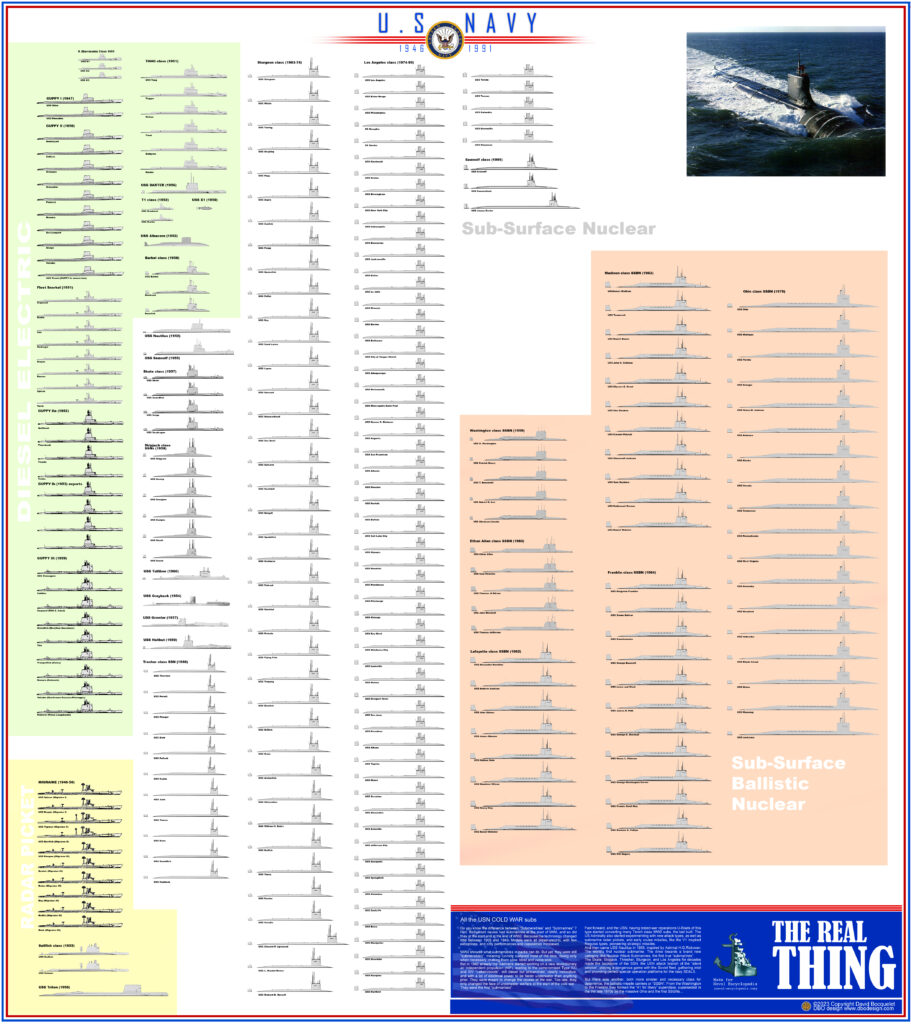
Cold War USN Subs – The Poster.
A quest for the perfect silent hunter
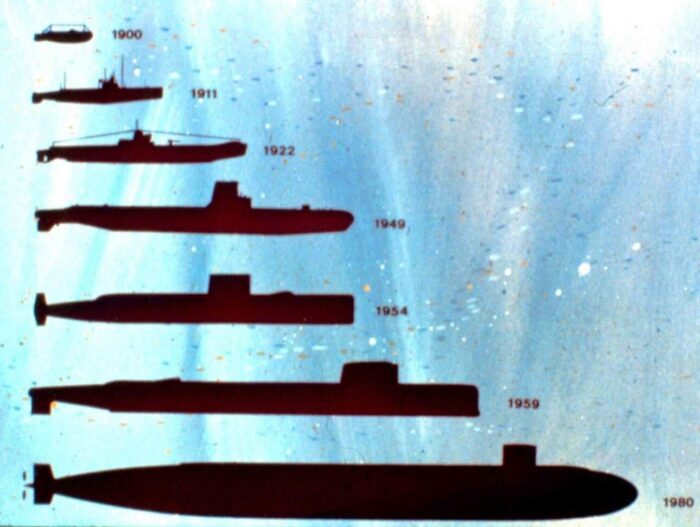
Evolution from USS Holland in 1900 to the Ohio class in 1990 (wiki cc)
Technicalities of this evolution from the early GUPPY conversions, to a brand new ASW hunter-killer, the 1951 Barracuda class, the now forgotten Tang, Darter, Mackerel, X1 converged towards the efforts of Hyman George Rickover, the “Father of the Nuclear Navy”. He pushed for the construciton of USS Nautilus (1954) and made sure that this new energy soon spread into the surface fleet, with the USS Long Beach and Enterprise. But it spawned a brand new line of attack submarines, USS Seawolf, the Skate class, USS Albacore and the Barbel class which started to look at new hull shapes, the Skipjack class, with the now famous “teardrop hull”. The latter was the true starting point of the modern SSN lineage. The Tresher, Permit, Sturgeon all paved the way in the 1960s to the great standard of the cold war, the large Los Angeles class (1974-96, 62 built and constantly improved).
A wealth of experience showing the limit of upgrade, led to the sophisticated (and very costly) Seawolf class (1995) experiencing massive cancellations. Today’s Virginia class (2003) is the true replacement for the Los Angeles, with 22 built so far, 66 planned… We will have also having a sneak peak -although off-topic- on the fascinating and highly secret SSN(X)-class submarine planned for the 2030s. Technology is advancing by leaps and bounds but the goal is always the same, underwater supremacy, just as there is an air supremacy for 6th generation fighters. Now we are talking of very fast, super-silent, stealthy 4rd generation SSNs.
Deterrence: The Silent service wins
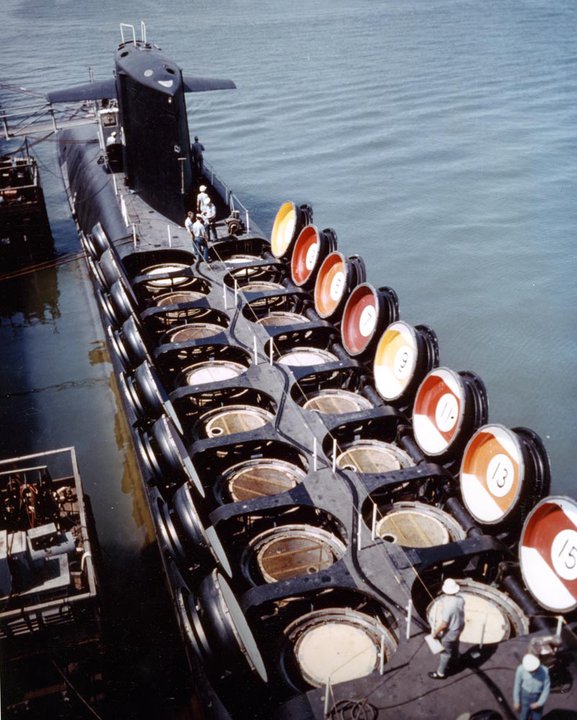
USS Sam Rayburn (SSBN-635), missile hatches open.
But SSNs are hunters, and the Eisenhower’s era interarms rivalry to possess nuclear deterrence seemed claimed solely by LeMay’s SAC (Strategic Air Command). It was fiercely disputed by the Navy, as shown by the the story of USS United States, and the “admiral’s revol”, as well as the Army which at least in the end obtained the land strategic ballistic site’s supervision, down to tactical missile, shells or even the “Davy Crockett” rocket, carried by a simple Jeep. Over time, that is the 1980s, the Navy eventually won. Bombers could still be shot at by a new generation of very fast, high altitude missiles, and apart attemping under-radar models such as the reconverted Rockwell B1 or stealth, with the Northrop B2 and now the 2nd gen. B-21 Raider, no idea soluton existed. For the army, the picture was no better. It was impossible to hide a missile silo site, and with satellite imagery, the location of fixed ballistic missiles was known in time, making them vulnerable. In the end underwater deterrence imposed itself through SSBNs. It just seems the best, most secure option. Gradually all nuclear powers dropped alternatives to concentrate on this one, more secure, and the standard today.
This parallel development of course needed USS Nautilus to get started, at least in principle, and after early experiments, USS Grayback, Growler and Halibut, and even GUPPY conversions, led to the Georges Washington class in 1959, just six years after the launch of Nautilus… This lineage led to the Ethan Allen class (1960) and the parallel to the Los Angeles, the Lafayette/Franklin class (1962-67) and Ohio class (1979-1997). Today’s current Columbia class inherited the experience of these almost eighty years of continuous developments. Four submariners generations to the service of US life insurance policy on the world’s sphere.
The quest for the perfect submarine: From the GUPPY to the nuclear age
The Type XXI revolution
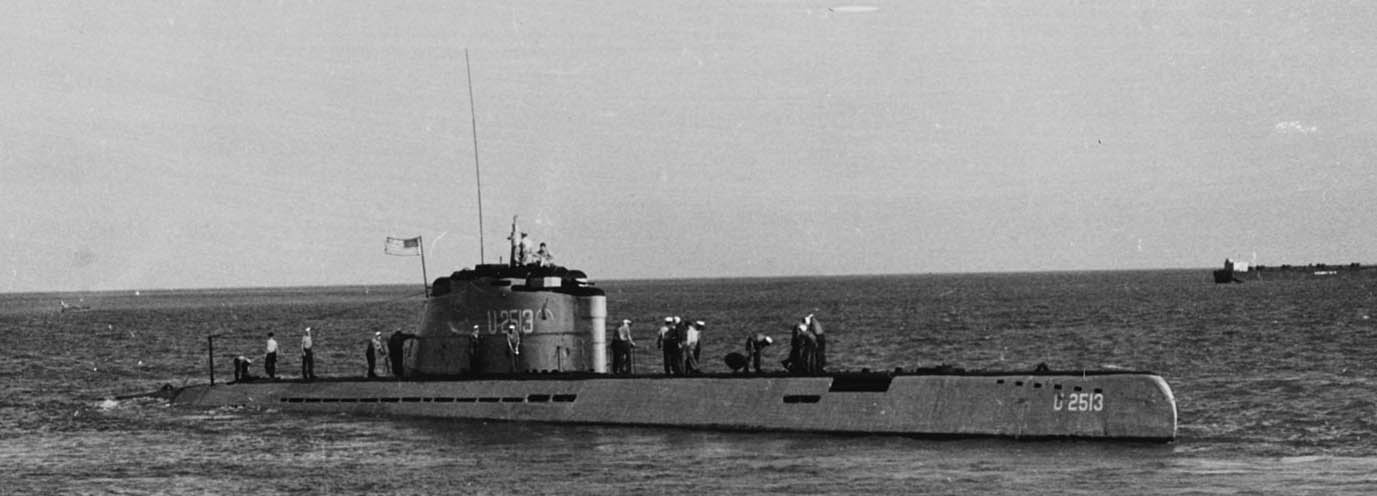
U-2513 being tested off Key West, Fl, postwar.
The Type XXI “Elektroboote” as often seen as a revolution of submersible warfare, precisely changing the term to “submarine”. They could be indeed considered as the first true “submarines”. Before them, the Type VII and XI and well as all other models in service, the US Gato/Balao/Tench, all IJN models as well as all British subs, being small or oceanic, are basically “submersibles”, fast in surface while they spent most of their time and only diving in emergency or for an attack. Underwater, they were slow, blind and unwieldy, with only a limited stay. One favorite ASW tactic was to play the watch. Keeping track and depht-charging the sub to “keep its head down”, for more than 24th. Short of battery power and, more crucially, air, any sensible captain would soon have to emerge again, and then be mercylessely given the coup de grace in surface by gunnery. This classic scheme was already pioneered in 1914.
But in 1943 already, sensing the wind turning in the Atlantic, Karl Dönitz pressed for a new design, and at first hoped that Professior Walter’s revolutionary AIP (Air independent Propulsion) a far more daring solution than the compromise snorkel, could allow an U-Boote to stay underwater for much longer and develop much greater speeds underwater. In the “mental scheme” of allied escort commanders, no U-Boat could be fast enough underater to escape their ships. Frigates, Corvettes and destroyer escorts were content with 21 knots, and usually cruised at 15, which was largely sufficient to catch and keep track of any U-Boat submerged. The fastest operational one was the early Type IX for example coulkd almost reach 15 knot, but to preserve range this was more usually 10. To preserve energy, most U-Boat captain kept it at 5-7 knots, which was agonisingly slow. There was little room for manoeuver and left only the depths (the 3rd dimension) to escape the dreaded depht charges. But the lower it went, the greater was the danger of compression forces and dramatic leakages.

So unleashing a wolfpack of submarines capable of staying thrice longer underwater and making submerged speeds of 25+ knots was extrememly seducing on paper.
But after a few prototypes, the “Walter turbine” seems still too far away from production and a compromise was chosen. The Type XXI would cumulate several innovations:
A new streamlined hull to gain a greater speed underwater, no gun deck but remote-controlled AA on the fin, modern active/passive sonars and radars, a torpedo autoloader, new acoustic torpedo models, and last but no least, twice the electric power with double-stack batteries, which creating a deep, three-deck U-Boat something never seen before. The last card to play, in the context of heavy bombing of German territory, was modular construction with final assemblies in bunkers, not established in sensible, known Yard areas.
However the setup was long and in reality on a few of these Type-XII ever saw action, making uneventful patrols at the end of the war. They suffered from many construction defect and all their combined systems were so new that extra time was needed to fix issues and properly trained their crews. In the end, the Type XII was a military failure, but a technological breakthrough nevertheless. Even though they were a compromised design, never getting their intended AIP, the latter emerged again and was perfect as a viable tech for new generation SSK (diesel subs of the 1970-90 generation).
Needless to say, the allies soon obtained as many of these conveted “Elecktroboot” as war reparation. They spurred a brand new generation of diesels submarines or justified postwar conversions by droves (like the GUPPY in the US), notably to contain the fleet of “Whiskey-class” Soviet submarines inspired directly by the Type XXI. The US on their side obtained U-2513 and U-3008, both in working orders, and thus, with the help of a few German engineers willing to leave for the US, and the few blueprints that were captured during Operation Paperclip in 1945, the US submarine fleet tested a new revolutionary type that was to greatly influence design and construction.
The fleet snorkel as the “free world” standard
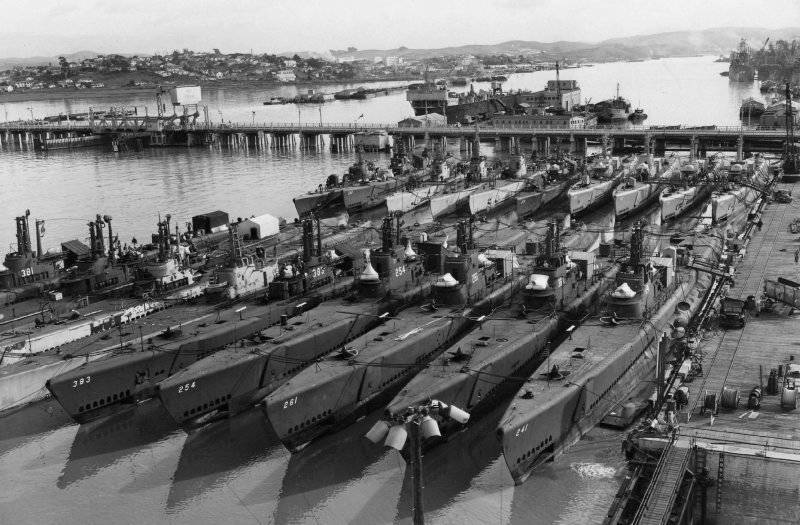
Gato-class boats mothballed in 1946.
The passage to the “Type XXI standard”, was not easy though. The USN wanted to explore the new concept by creating a brand new class of attack submarine at the end of 1945 already. But post-war budget cuts with the still ongoing cost of maintaning a huge wartime fleet, had the Congress negate this plan. FY 1946 however was obtained a minimal budget to at least convert two of the numerous “fleet submarines” at hand. Better, these were late boats completed postwar, and in pristine condition to return on drydock. USS Odax and Pomodon (hence the sometime found “Pomodon class”) were the pioneers of the GUPPY or Greater Underwater Propulsion Program. This did not focused on a better electric power, but also rewroking the hull and/or fin for better performances while underwater, compounded when new sonar tech when available.
Retrospectively, the two were the first and only of the “GUPPY I” conversion type, with many more following over more than a decade (until 1958) concerning a large mass of the wartime feet submarines, all reequipped with a snorkel by the way, hence the collective nickname of “fleet snorkel”. The idea did not came from the admiralkty, which stuck to its idea of a brand new type, even if it would go at odds with the Congress. In the end, a compromise was found by the Bureau of Ships. They concluded that a conversion would cost far less to the taxpayer than a brand new construction, provide in record time the fleet of new generation submarines needed to cope with the Soviet threat, and still maintain jobs where the conversion would take place.

The Dutch GUPPY Ia HLMS Walrus in the 1960s

The Italian Enrico Tazzoli, of the GUPPY Ib type.

ARA Santa Fe, a GUPPY II famously sunk by helicopters during the Falklands war.

Hai Shi, a GUPPY III used by the ROCN (Taiwan Navy) and even in service still post-2012…
The admiralty accepted in the condition that research of a new type would start FY1949, for experimental purposes only, meaning just three subs. This became the Barracuda class (completed 1951-52). They were to be followed by the Tang class, a different design in scale as the first were coastaln the second oceanic, and other experimental boats alongside like USS Darter, and the midget Mackerel and X1. The real game changer was of course the FY52 programme, with full support of newly elected president Dwight D. Eisenhower and a more receptive congress amidst “red scare”.
This opened the door for USS Nautilus and quickstarted the US nuclear fleet programme, driven by Hyman Rickover (see later). USS Nautilus completed in 1955 and started a tour of records, proving the concept. All this time, conversions of older WW2-vintage Gato/Balao/Tench went on: GUPPY II, Ia, IIa, and eventually FY52 programme GUPPY III in 1954-58, with conversions still going on well unil the late 1960s. In fact the last of the unmodified “fleet snorkels” met the scrapyard only after 1973.
Jus like the FRAM program, the GUPPY program allowed the US fleet to maintain its absolute domination as a naval power over the rest of the world, even including the USSR, Warsaw Pact and its potential allies around the world (like China). As a reminder the FRAM was a modernization program just as ambitious, if not more (notably via its staggering cost) of vintage WW2 destroyers of the smililar Allen M. Sumner and Gearing classes. And just like the GUPPies, they were generously distributed under MDAP to several European Countries (less the technological independent British, German and French Navies), inspiring a new generation of SSKs in service by the 1970-80. GUPPies were also distributed to many allies nations.
The last diesel-electric hunters
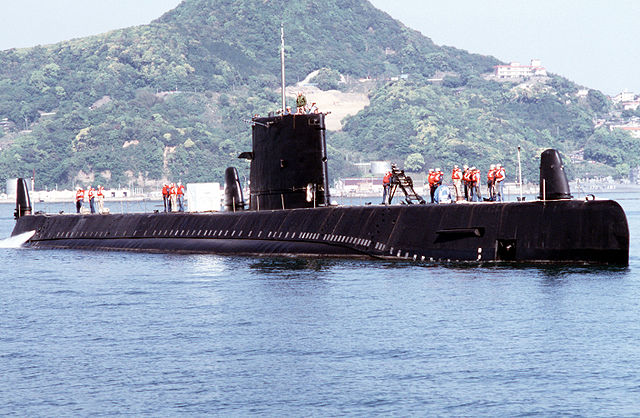
USS Darter (SS-576), an improvement over the Tang class and last diesel attack submarine of the US Navy (SSK).
If the GUPPY provided the bulk of the USN submarine fleet until 1955, R&D on submarine desigh, based on torough examinations and interpretations of the Type XII went on already in 1947, where the Barracuda class (FY48 program) started its gestation. Examiners of the Type XII were not impressed by its many flows and shortcomings. They saw good ideas badly implemented and botched approaches by force of emergency, low priorities and in general a degrading context in Germany by 1945. Not being able to built a brand new model in 1946 due to an unfavourable context, as for 1947 and 1948, at last was secured a budget FY49 for three small experimental boats of the “K” class.
Not spoiling the proper coverage which is done below and in a future dedicated post, this was almost a timid first step, more R&D than a propoer operational class. This was the role of the “fleet snorkels”, all undergoing conversions at various degrees to stay relevant. The only “class” ever started were the Tang (the first, SS-563 was even started before the USS K1 (SST 3) was ever laid down in april rather than July 1949. Still, six boats would do little with the mass of “Whiskeys” and the new classes delivered afterwards, but three could be dispatched in the Pacific and three in the Atlantic, work with the fleet and compare to the “fleet snorkels”.
It was useful to see of a brand new design was more practicable than a conversion, and it appeared the case, although cost-wise, the relatively large Tang class (1,560 versus 765 tons for the K class) remained costly, but the call to automation moderated their long run maintenance and upkeep costs. They had long careers, but not under US flag, being sold in 1978-80 to Turkey and Italy, and two discarded at the same time. Along with USS Darter they would remain the last significant USN diesel subs.
Conventional US Submarines
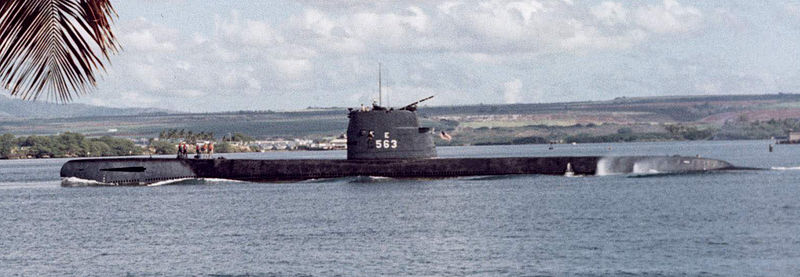
USS Tang off Pearl Harbor. The Barbel class was the very last of the diesel class in US service.
If nuclear power was soon declined for submarines, the bulk of USN sub fleet in 1970 was still made of conventional submarines. The oldest ones were modernized WW2 mass-produced Gatao/Balao-Tench series (GUPPY), and they provided the meaty part of the sub fleet, ensuring no urgent need for new submarines. This freed the admiralty to test multipe solutions and test innovations at a small scale, enabled by peacetime: The small Barracuda, the large Tang, the Skate and Barbel were all conventional diesel-electric.
Experimental boats such as USS Nautilus, Darter, Mackerel, X1, Albacore, were all early SSNs. The race towards strategic subs through pre-nuclear testing models such as the USS Grayback, Growler and Halibut, were just part of the whole story. The “silent service” also created models usable as radar picket. From 1944, the new detection system spawned a true set of “electronic reconnaissance” tactics, and to the early destroyers succeeded a generation of safer submarines, At first of the GUPPY type (conventional) and soon the specialized Sailfish class (1955) and the nuclear-powered USS Triton, the sole and only radar picket of this time worldwide (1958) retired in 1969. Modern SSN or even last generation SSBNs are all capable of electronic warfare and intel gathering to some degree. This is also a forgotten part of this heritage, and it started in the cold war.
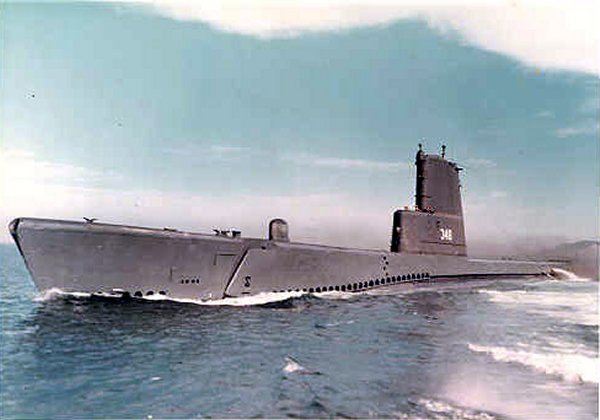
They had several nicknames, but “fleet snorkels” was the one which stuck. It appeared in the early cold war to differienciate them from the first SSNs. The main issue in 1965 was noise, with more and more precised sonar systems.
In 1946 when the US obtained as war reparation two Type XII U-Boats (U-2513 and U-3008), thoroughly tested and examined. What left of the project was a modernization plan for the existing, very large Gato/Tench/Balao mass of wartime-built oceanic submersibles. In 1947, the Bureau of Ships opposed the USN which wanted new submarines based on the Type XXI, but they were opposed by the Bureau of Ships that maintained that it would be far cheaper to convert the existing wartime submarines. The first were ladt-production boats at Portsmouth, USS Odax and USS Pomodon, simply modified in 1946 and completed in 1947. Basically all boats were more or less modified under the same lines: Streamlined hull and fin, better underwater speed thanks to a new set of batteries, doubled power, new periscopes, snorkel installed, new acoustic systems and sonars.
These were several successive GUPPY type conversions, the acronym meaning: Greater Underwater Propulsion Program. The GUPPY I concerned only two experiental boats, and the mass went through GUPPY Ia, II, IIa, Ib, and GUPPY III in 1959. This enables dozens of these submarines to stay relevant in some allies navies until the 1980-90s for some…
 Barracuda class (SSK)
Barracuda class (SSK)
SSK-1 to SSK-3 (1951) Barracuda, Bass, Bonita (1955)
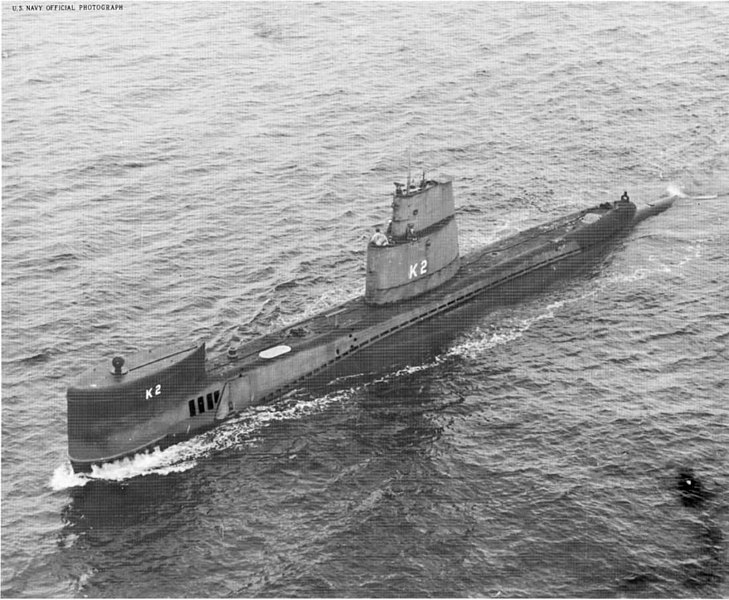
The Barracuda-class submarines (originally called “K-1-class”) came from Project Kayo, the new postwar R&D effort by the USN to digest the lessons of submarine warfare in WW2 and solve the issues observed both in attack and defense. A hull classification system was newly created, and SSK was used for “hunter-killer submarine”, so basically an “attack submarine” as we would understant today. It was pre-nuclear age, and thus, the term was reused for diesel-electric attack submarines around the world since.
Originally named K-1, K-2 and K-3 (hull numbers SSK-1, 2 and 3). Eventually in December 1955 they became USS Barracuda, Bass, and Bonita. Other “numbered” submarines would also given name at the same time, like the experimental T class, becoming the “Mackerel class”. In 1959, USS Barracuda was redesignated SST-3, the “T” standing for training. In 1964 her main sonar was removed and she became SS-T3 in 1973 (back to an attack submarine). USS Bass became SS-551 in 1959 and Bonita SS-552 in 1959.
Specifications
Displacement: 765 tons (777 t) surfaced, 1,160 tons (1179 t) submerged
Dimensions: 196 ft 1 in x 24 ft 7 in x 14 ft 5 in (59.77 x 7.49 x 4.39 m)
Powerplant: 3 shafts GM 8-268A diesels 1,050 shp (780 kW), 2 GM electric motors, 126-cell battery
Speed: 13 knots (24 km/h) surfaced, 8.5 knots (15.7 km/h) submerged
Range: 9,000 nautical miles (17,000 km)
Test depth: 400 ft (120 m)
Armament: 4 × 21 inch (533 mm) torpedo tubes (bow)
Crew: 37 officers and men
 Tang class (SSK)
Tang class (SSK)
USS Tang, Trigger, Wahoo, Trout, Gudgeon, Harder (1951)
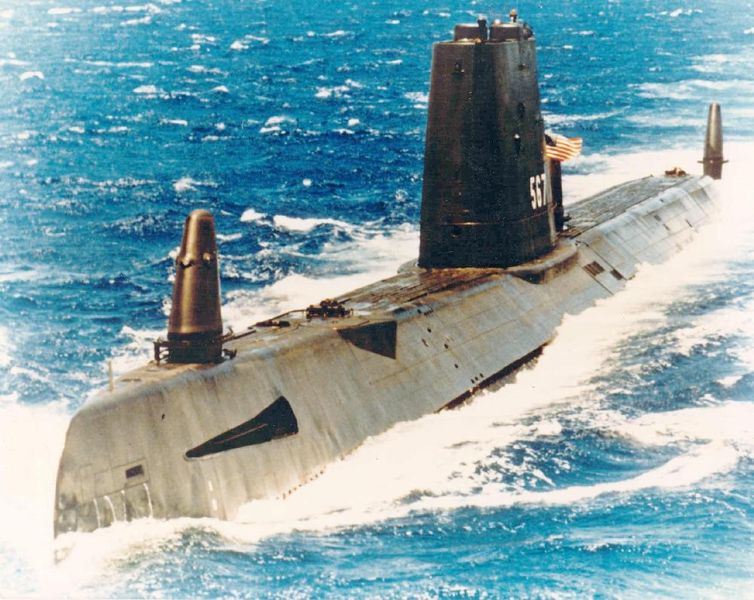
The Tang-class submarines were the first submarines designed (under project SCB 2) and built by the United States Navy after WWII. They incorporated the best features of the high-speed German Type XXI U-boat and the venerable U.S. Navy fleet submarine. The Tang-class, with the fleet submarines converted under the Greater Underwater Propulsion Power (GUPPY) program, had much higher submerged performance than their predecessors, but were quickly surpassed by the nuclear-propelled submarines that entered service beginning in 1954. Six units in total were built.
In October 1946, the first two boats were ordered. Tang was built at Portsmouth Naval Shipyard; Trigger at the Electric Boat yard in Groton, Connecticut. In 1947, contracts were awarded to Portsmouth for Wahoo and to Electric Boat for Trout. Then in 1948, a similar pair of contracts were awarded to Portsmouth for Gudgeon and to Electric Boat for Harder. They are named for six US submarines lost during World War II, of which most of their commanding officers were killed in action while combating Japanese surface vessels.

Specifications
Tonnage: 1,560–2,050 long tons (1,585–2,083 t) surfaced, 2,260–2,700 long tons (2,296–2,743 t) submerged
Dimensions: 268 x 27 x 17 ft (82 x 8.2 x 5.2 m) (ext. 277 ft (84 m) and 292 ft (89 m))
Propulsion: 2shafts, 4x GM 16-338 “pancake” diesels (4,000 shp), 2 electric motors (4,700 shp), 4x 126-cell batteries
Speed: 15.5 kn (28.7 km/h; 17.8 mph) surfaced, 18.3 kn (33.9 km/h; 21.1 mph) submerged
Range: 11,500 nmi (21,300 km) at 10 kn (19 kph) surfaced
Test depth: 700 ft (210 m)
Armament: 8× 21 inch (533 mm) TT (6 forward, 2 aft), 26 torpedoes
Crew: 8 officers, 75 enlisted
 USS Darter (SSK)
USS Darter (SSK)
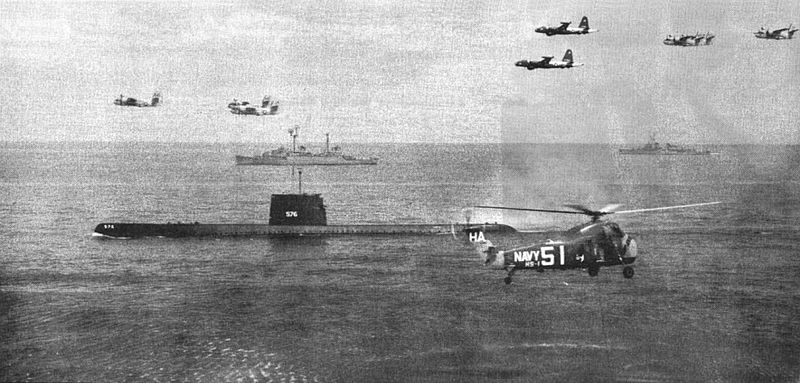
USS Darter (SS-576) was a single experimental diesel submarine based on the Tang class and incorporating many improvements, built by the Electric Boat Division of General Dynamics (Groton, Connecticut). Ordered on 30 June 1954, laid down on 10 November 1954, launched on 28 May 1956, commissioned on 20 October 1956 under program SCB 116. She was mostly a testbed for very sophisticated acoustic, electronic and fire control systems meant for the next generation, as well as other innovations such as a three-man helmsman-planesman station with stick controls.
USS Darter was decommissioned in Pearl Harbor on 1 December 1989 after a 33 years service, one of the longest career of any USN sub, earning seven Battle “E” Awards and many excellence awards. Stricken in 1990 she ended as a target on 7 January 1992 (for USS Tautog, SSN-639).

Specifications
Displacement: 1,620 long tons (1,650 t) surfaced, 2,372 long tons (2,410 t) submerged
Dimensions: 283 ft 3 in x 27 x 19 ft (86.33 x 8.2 x 5.8 m)
Propulsion: 2 shafts Diesel-electric
Speed: 15.5 kn (17.8 mph; 28.7 km/h) surfaced, 16 knots (18 mph; 30 km/h) submerged
Test depth: 700 ft (210 m)
Armament: 8× 21 inch (533 mm) TTs, six forward, two aft
Complement: 8 officers, 75 men
 T1 class (SSK)
T1 class (SSK)
T1, T2 (1952) USS Mackerel, Marlin (1955)
The T-1-class submarines were two experimental midgets designed for training submarine personnel, testing new equipments. They would have a career spanning 19 years and became the smallest operational submarines of the USN under the programme SCB 68 for an experimental auxiliary submarine. Hull number was AGSS-570, then T-1 and later SST-1, and then USS Mackerel and USS Marlin (SST-2) in 1956.
They replicated also to the coastal Soviet M-class, with a crew of 16, still in service in 1950. The latter were effective in the Baltic, Back and Mediterranean Seas. The SBC 68 thus had the secondary role to provide a suitable small submarine for frigates and destroyers training to US and NATO anti-submarine warfare.
Both built at General Dynamics entered service in 1953, based in Florida and Caribbean waters, both decommissioned in 1973.

Specifications
Displacement: 303 long tons (308 t) surfaced, 347 long tons (353 t) submerged
Dimensions: 131 ft 3 in x 13 ft 7 in x 12 ft (40 x 4.14 x 3.7 m)
Propulsion: 1 shaft, 2 GM Diesels (total 250 shp (190 kW), 1 Elliott electric motor (380 shp (280 kW), 1 battery
Speed: 10 knots (19 km/h; 12 mph) surfaced, 10.5 knots (19.4 km/h; 12.1 mph) submerged
Range: 2,000 nautical miles (3,700 km) surfaced at 10 knots (19 km/h)
Test depth: 225 ft (69 m)
Armament: 1 × 21 inch (533 mm) torpedo tube
Crew: 2 officers, 12 enlisted men
 X1 Class (SSK)
X1 Class (SSK)
(1955)
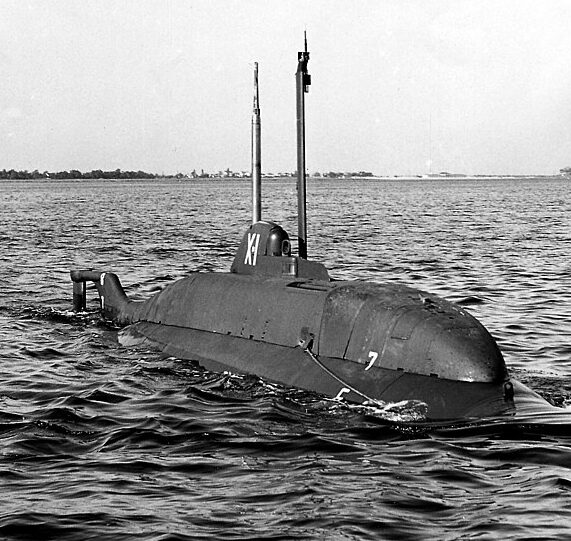
X1 was basically a super-midget submarine, built at Fairchild, Farmingdale, based on the WW2 X-craft of Tirpitz attack fame. One was shipped to the US to be studied and used as powerplant hydrogene peroxyde, as part of the allied AIP/Peroxyde design program, which the US derived their Explorer class. It proved once and for all this could not be a solution.
Started in January 1954, USS X1 was launched in September 1955 and completed two months later. In February 1958, the instable chemical mixture trigerred an explosion, which exact causes never had been clearly analyzed. Rebuilt in Philadelphia (she was broken in three), she was back for tests on 14 December 1960, with a more conventional diesel and test craft for the NSRDC () painted in orange. She was retired in 16 February 1973.
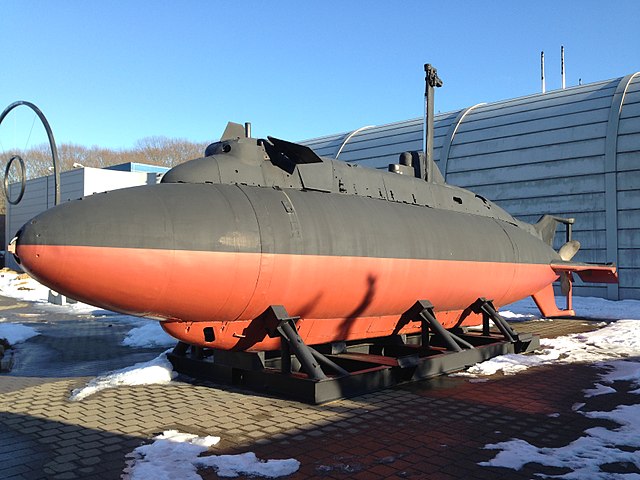
Specifications
Displacement: 31 long tons surfaced, 36 long tons submerged
Dimensions: 49 ft 2 in x 7 ft x 7 ft (15 x 2 x 2.1 m)
Propulsion: 1 shaft, 2 Diesels, 2 electric motor, 1 battery, 30 bhp
Speed: 15/12 knots surfaced/submerged
Range: 5,00 nautical miles surfaced
Armament: none
Crew: 1 officer, 4-7 sailors
 USS Albacore AGSS-569 (1952)
USS Albacore AGSS-569 (1952)
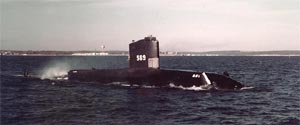
The USS Albacore (1952), experimental precursor of the Barbel, was tested in 1954. With her revolutionary hull shape, extensively tested with very high capacity batteries, able to reach 33 knots underwater.
She was indeed a unique experimental submarine, a research & development model only, used to pioneer the a “teardrop” hull form, which as referred later as the “Albacore hull”. This was a revolutionary design born from very extensive hydrodynamic and wind tunnel testing, which goal was to provide superior underwater speed and agility. Third of the name, she was laid down on 15 March 1952 at the Portsmouth Naval Shipyard (Kittery, Maine), launched on 1 August 1953 and commissioned on 6 December 1953 with Lt.Cdr Commander Kenneth C. Gummerson at the helm.
This experiment went hand in hand with nuclear propulsion, which was the task of USS Nautilus. Thus, she was probably the world’s most advanced diesel sub and the best ever built at this point by the US, successfully concluding a lineage going back to USS Holland. The trick to gain time in development is that she was unarmed.
After a long career of evaluations filling the purpose, she was Decommissioned on 9 December 1972, stricken on 1 May 1980 and later converted as a museum ship. See also
Specifications USS Albacore
Displacement: 1606.62 tons surfaced, 1823.51 tons submerged
Dimensions: 205 ft 4.75 in x 27 ft 3.75 in x 19 ft 1 in (62.60 x 8.32 m x 5.82 m)
Propulsion: 2x 7,500 shp counter-rotating electric motors coupled to two 1,000 bhp/817 kW diesel/electric generators
Speed: Surfaced: 25 knots, Submerged 33 knots
Crew: 5 officers, 49 men
 Barbel class SSK (1958)
Barbel class SSK (1958)
USS Barbel, Blueback, Bonefish
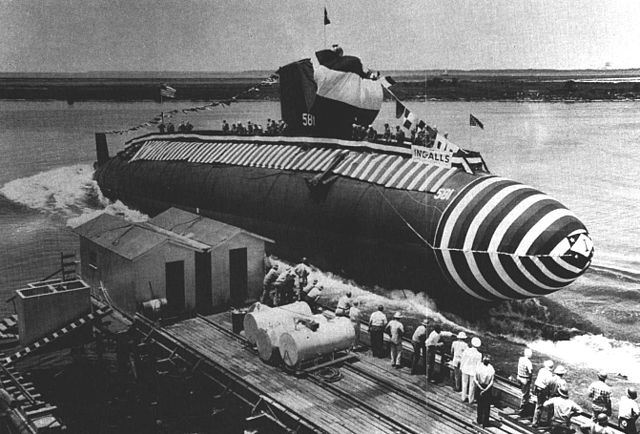
Launch of USS Blueback in Ingalls, 1959
The three Barbel class ships (Barbel, Blueback and Bonefish) were the last American attack diesel submarines. They were made from the finely worked hull of the USS Albacore (1953), but with a higher tonnage and integrating sonar and torpedo tubes. They had only one propeller and their 6 tubes were in the bow. The old rear tube system was now obsolete, and impossible due to the axial shaft. They were equipped with planes at the bow, and later on the fin. They also innovated in their own right, with an internal layout including a single central operating room where all orders and indications were grouped, a novelty later copied by subsequent SSNs.
Thanks to their hydrodynamics, they were able to still hit 18.5 to 21 knots underwater. A far cry from the Albacore and the best proof that only more power (hence nuclear) can reach the gap. These high speeds, were valid only for short periods thanls to powerful electric motors directly coupled to batteries. They were roomier with better accomodations though, and pioneered also noverlties in tinternal layout that were passed on new SSNs. Still, all three Subs were still mostly prototype, in service in 1959 and until the 1980s. USS Bonefish was only retired from active in 1988, the other two in 1990.

Barbel class Specifications:
Displacement: 2,144t Surfaced, 2,639t underwater
Dimensions: 219 ft 2 in x 29 ft x 29 ft (66.8 x 8.8 x 8.8 m)
Propulsion: 1 shaft, 3 diesels, 1 Westinghouse Electric Motors 4,800/3,150 shp.
Top speed: 15/21 knots max.
Crew: 77
Electronics: Sonar BQS-4
Armament: 6 TLT 533 mm (bow)
The fad of submarines radar pickets
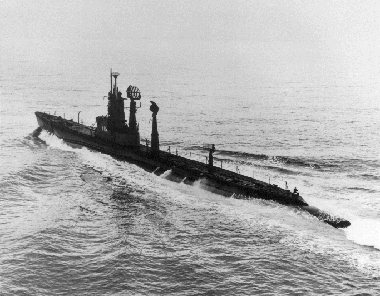
USS Trigrone, SSR-419, in the 1950s.
 Migraine class (SPQ)
Migraine class (SPQ)
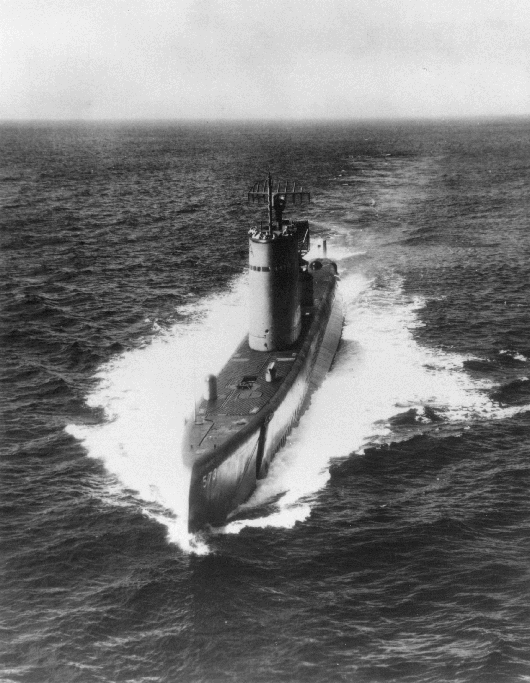
USS Salmon (SSR-573) Migraine II type, and last “fleet snorkel” conversion.
Not a single boat but a whole serie of radar picket conversions. It concerned ten fleet submarines, all converted into Migraine I to Migraine III class. The high casualties off Okinawa gave rise to the radar picket submarine. Soon the idea of converting “fleet snorkels” started in prevision of the invasion of Japan. USS Grouper and USS Finback received rudimentary conversions with a new SR search radar, SV search radar, both mounted vertically as height finders while USS Threadfin and Remora were completed after the war with the same installations.
The U.S. Navy continued to develop radar picket submarines (SSRs) after World War II under Project Migraine, and by 1953, a total of 10 new SSR conversions had been performed with SR-2 and SV-2 radars:
Migraine I: 1946 conversions of USS Spinax and Requin. Same mofifications as seen above, but the radar equipment took the place of torpedoes at the stern. The radar antennas were mounted directly on the hull, above the equipment, but were damaged by spray.
Migraine II (SCB 12) saw in 1947 the raising of antennas onto masts, and the equipment was moved in the aft battery room benefiting from higher capacity GUPPY batteries. Topside fathometers were also mounted for limited under-ice capability navigations and the aft torpedo tubes were removed, the compartment used for aditional storage. USS Burrfish and Tigrone were so transformed, and later the Migraine I were updated along the same design.
Migraine III (SCB 12A) were stretched with an added 27.5-foot (8.4 m) compartment to hourse a CIC, new search antenna in the enlarged sail and new compartment. The ones concerned were USS Pompon, Rasher, Raton, Ray, Redfin, and Rock.
 Sailfish Class SA (1955)
Sailfish Class SA (1955)
USS Sailfish, Salmon
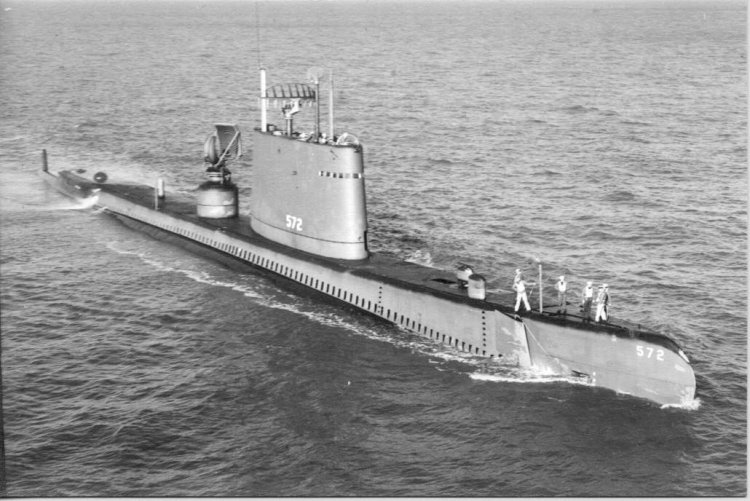
In 1956 the first of two large, purpose-built diesel SSRs arrived, USS Sailfish (SCB 84) which combined a better surface speed for “radar scouting”, in advance of carrier groups and using the new BPS-2 and BPS-3 radars. Top speed however barely reached 21 knots making them unfit for carrier group use. They were relegated to amphibious group operations.

Specs Sailfish class
Displacement: 1,990 long tons/2,334 long tons surfaced/3,168 long tons submerged
Dimensions: 350 ft 6 in x 29 ft 1 in x 16 ft 4 in (106.83 x 8.86 x 5 m)
Powerplant: 4× Fairbanks-Morse Diesels, Elliott electric motors, 2 × 126-cell Sargo II batteries
Speed: 20.5 knots (38.0 km/h; 23.6 mph) surfaced, 15 knots (28 km/h; 17 mph) submerged
Complement: 95 officers and men
Armament: 6 × 21 inch (533 mm) bow TTs, 18 torpedoes
 Triton Class SPQ (1958)
Triton Class SPQ (1958)
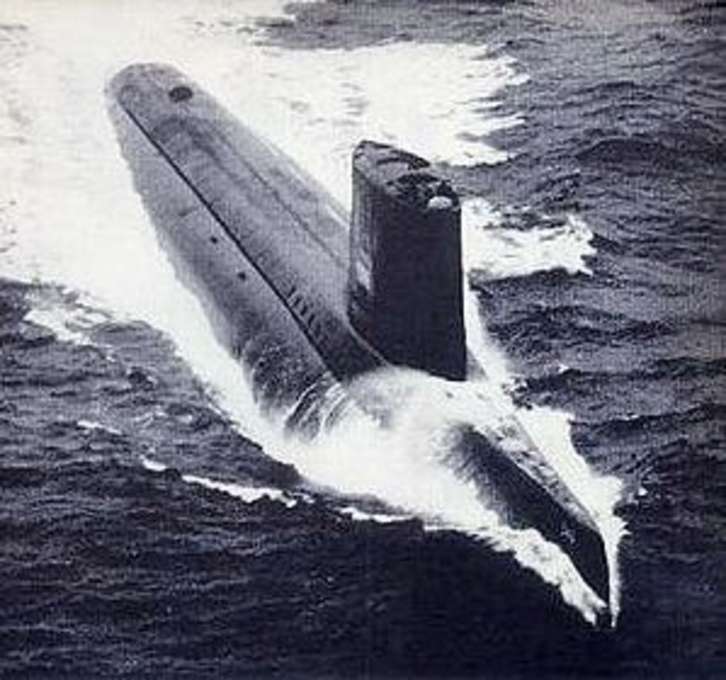
A large boat launched in 1958, first propelled by nuclear power, to solve mainly the problem of slow speed. It was thought that nuclear power would solve this and indeed it was realized under the SCB 132 program. USS Triton was commissioned in 1959 with the AN/SPS-26 radar. The second BPS-10 was never completed. Not only with two reactors Triton could reach 30 knots, but she was the longest submarine built by the United States until the Ohio class.
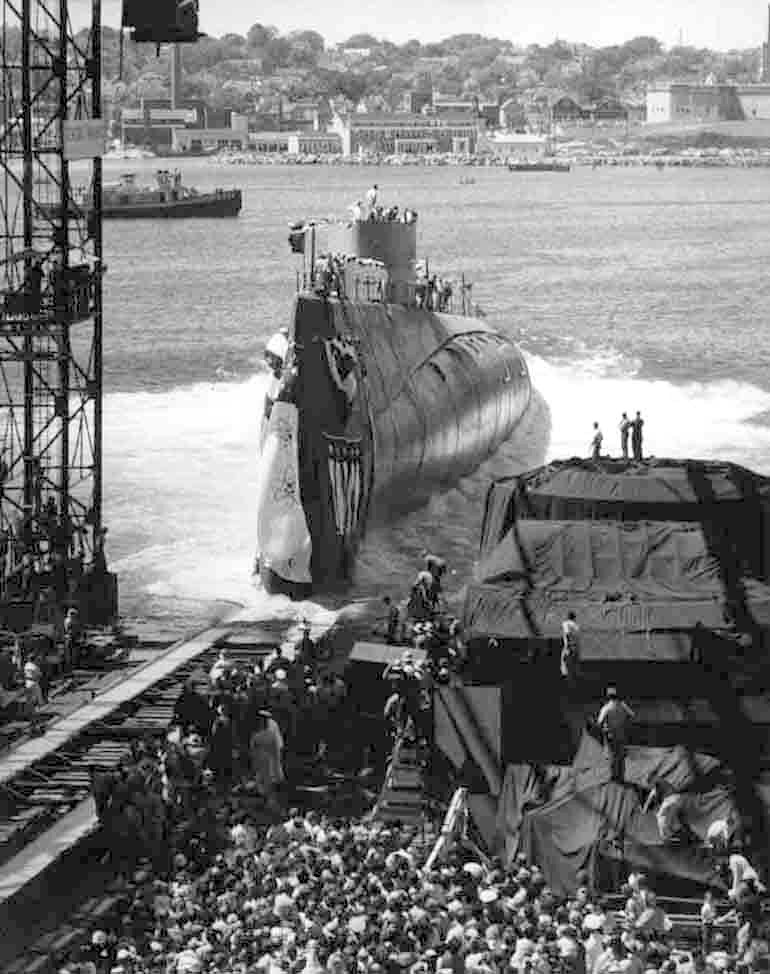
Launch of USS Triton 1958


Cutaway and Details

Displacement: 5,963 long tons surfaced, 7,773 long tons (7,898 t) submerged
Dimensions: 447 ft 6 in x 37 ft x 23 ft 6 in (136.40 x 11 x 7.16 m)
Powerplant: 2x S4G PWR, 2x steam turbines on 2×5-blade propellers 45,000 shp (34,000 kW)
Speed: +30 knots (56 km/h; 35 mph) surfaced, +27 knots submerged
Test depth: 700 ft (210 m) operational, 1,050 ft (320 m) crush
Complement: 172 as SSRN, 159 as SSN
Armament: 6× 21 in (533 mm) Mk 60 torpedo tubes, four bow, two stern
Sensors: AN/SPS-26, AN/BPS-2 radars, AN/BQS-4 AN/BQR-2 sonars, MK-101 FCS.
H.G.Rickover and nuclear era
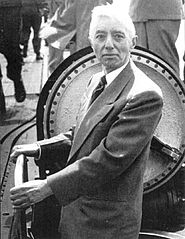 The great revolution was of course the domestication of atom power to be carried at sea in a closed environment: In that sense, the 4,000 tonnes USS Nautilus (1954) pushed with vigor by Hyman George Rickover, the American father of “nuc-subs”, was nothing short of an astonishing technological achievement. For the USN records, she was still a SSN, with six bow tubes, and soon the concept was confirmed by the even larger USS Seawolf, one year later.
The great revolution was of course the domestication of atom power to be carried at sea in a closed environment: In that sense, the 4,000 tonnes USS Nautilus (1954) pushed with vigor by Hyman George Rickover, the American father of “nuc-subs”, was nothing short of an astonishing technological achievement. For the USN records, she was still a SSN, with six bow tubes, and soon the concept was confirmed by the even larger USS Seawolf, one year later.
They prepared the ground for the Skipjack class SSN, quite small compared to later boats such as the Los Angeles, or the experimental Tullibee, an attempt to produce a coastal minimalistic SSN. However in the 1960s, “Rickover’s fleet” was born: The Tresher, Sturgeon, made its bulk while the Los Angeles announced the 70-80 and 90s, certainly the most famous mass-production SSN serie in history.
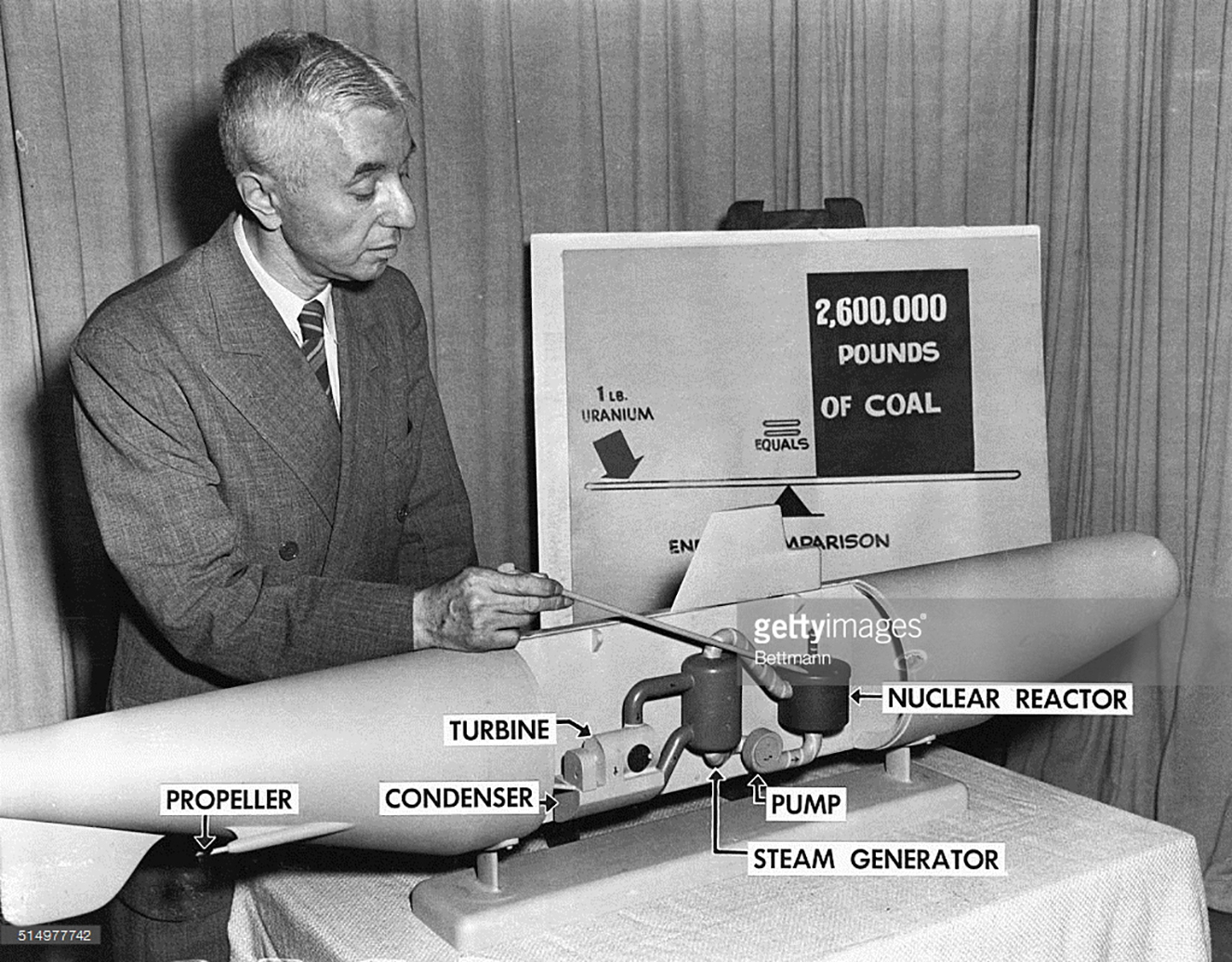
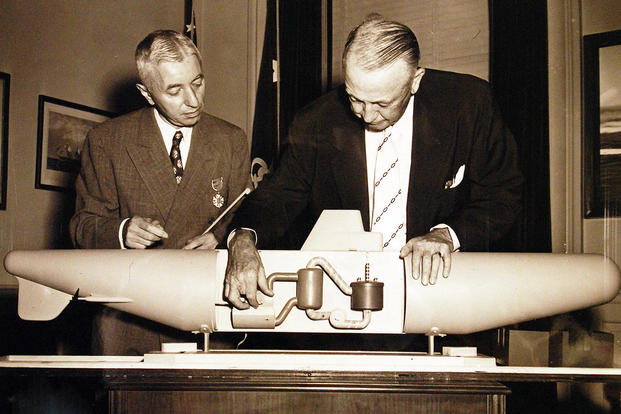
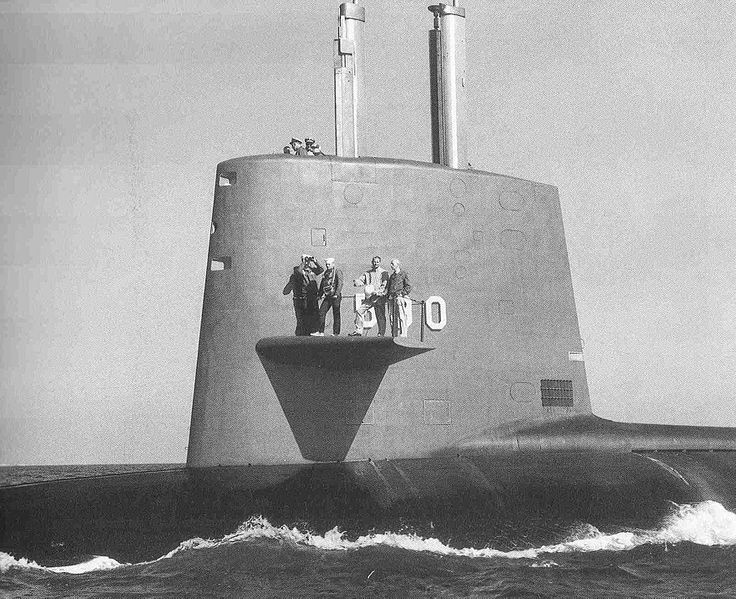
Nuclear Attack Submarines (SSN)
 Nautilus Class SSN
Nautilus Class SSN
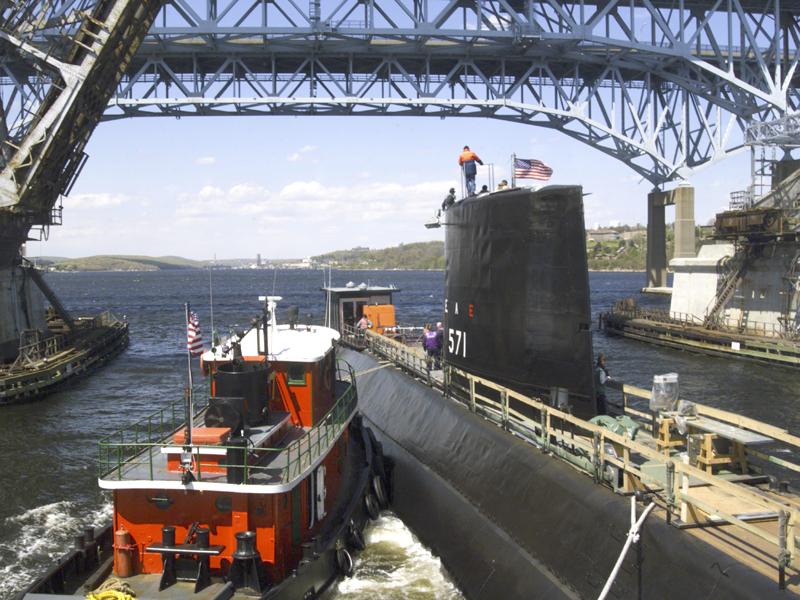
USS Nautilus (SSN-571) of SCB 64 program was the world’s first operational nuclear-powered submarine, record holder also, like the first making a submerged transit of the North Pole (3 August 1958) under Eugene “Dennis” Wilkinson. The latter set the stage for many of the protocols of today’s Nuclear Navy in the US. This boat retook a name already used, USS Nautilus (SS-168), of course inspired by Jules Verne’s novel “Twenty Thousand Leagues Under the Sea”, and for once, her propulsion better mirorred the revolutionary power used on Captain Nemo’s boat.
Construction started in 1952 after an order in 1951, she was launched in January 1954, sponsored by no other than Mamie Eisenhower, First Lady of the United States and wife of 34th President Dwight D. Eisenhower. Commissioned in September she went through many tests before being delivered to the Navy in 1955, and start to breake many world records. She was the first to travel to locations previously “off-limits” for submarines, but these also showed her design limitations and construction shortcoming, that would greatly help improve future boats. Ultimately decommissioned in 1980 she became a National Historic Landmark in 1982, without any contestation. Preserved as a museum ship ever since, she is located at the Submarine Force Museum in Groton, Connecticut with yearly visits amounted to 250,000.

Specifications
Tonnage: 3,533 long tons (3,590 t) surface, 4,092 long tons (4,158 t) submerged
Dimensions: 320 x 28 x 26 ft (97.5 x 8.5 x 7.9 m)
Powerplant: 2 shafts; 1 STR nuclear reactor + steam turbines, 13,400 hp (10,000 kW)
Speed: 23 knots (43 km/h; 26 mph)
Armament: 6 torpedo tubes
Crew: 13 officers, 92 enlisted
 Seawolf Class SSN (1955)
Seawolf Class SSN (1955)
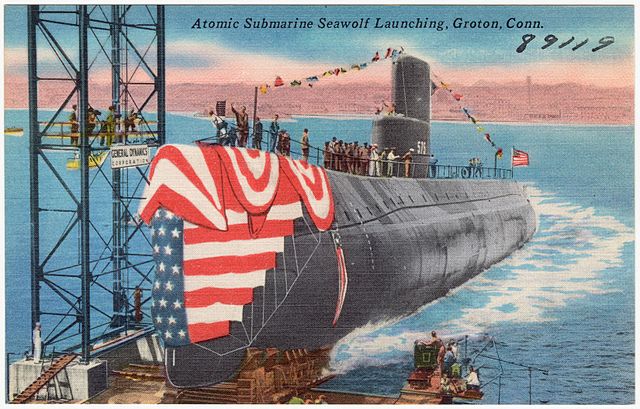
USS Seawolf (SSN-575) was the 3rd of the name, and second nuclear submarine, innovating still as the very first to test a liquid metal cooled -using sodium- and beryllium-moderated nuclear reactor. The unit was called S2G. This nbew method was reputed much safer as in case of power cut, cooling would be natural, no out of control reaction was to fear. The admiralty knew her as design SCB 64A, a variant of USS Nautilus, but she had a different conning tower with a stepped sail, the new BQR-4 passive sonar mounted forwared up in the bow instead below, which both looked as steps back, and thus she sported a different bow shape than other submarines. The sodium reactor experiment was not successful and in early her career she received a new standard pressurized water reactor S2Wa (decommissioned, drydocked between 12 December 1958 to 30 September 1960). Armed, she was able to see sole operational service. She was Decommissioned on 30 March 1987, stricken on 10 July but her long recycling only ended in 1997.

Specifications
Displacement: 3,260 tons surfaced, 4,150 tons submerged
Dimensions: 337 x 28 x 23 ft (103 x 8.5 x 7 m) -387 ft post conversion
Propulsion: 2 shafts 1x S2G, then S2Wa 1960 reactor, geared steam turbines, 15,000 shp (11,000 kW)
Speed: 23 knots (43 km/h) surfaced, 19 knots (35 km/h) submerged
Crew: 101
Armament: 6 × 21-inch (533 mm) torpedo tubes
 Skate Class SSN (1957)
Skate Class SSN (1957)
USS Skate, Swordfish, Sargo, Seadragon
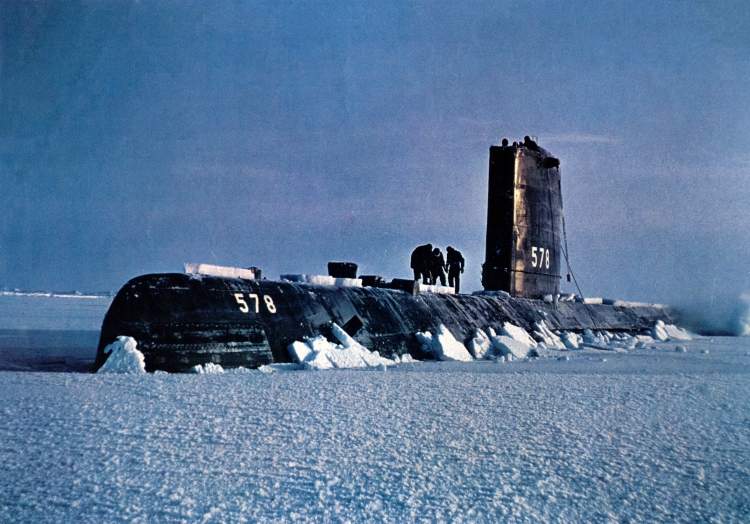
The Skate-class submarines were the first production SSNs of the United States Navy. Basedon the Tang class they had a nuclear propulsion plant derived from the one used on USS Nautilus. The four Skate class also had back their stern torpedo tubes. These became the smallest nuclear-powered attack submarines and served for many years, until 1989 for the last one. Also USS Skate was the first to surface at the North Pole on 17 March 1959. USS Skate and Sargo had the S3W reactor, Swordfish and Seadragon a S4W reactor plant and alternate arrangement. They were known as project SCB 121 as “economical production” nuclear-powered submarines, small and austere, notably compared to the costly USS Nautilus.

Specifications
Displacement: 2,250 long tons surfaced, 2,850 long tons submerged
Dimensions: 267 ft 7 in x 25 x 21 ft x 21 ft 3 in (81.56 x 7.6 x 6.48 m)
Propulsion: 2 shafts 1x S3W reactor, geared steam turbines, 6,600 shp (4,900 kW)
Speed: 18 knots (33 km/h) surfaced, 22 knots (41 km/h) submerged
Crew: 84
Armament: 8 × 21-inch (533 mm) torpedo tubes, 22 torpedoes
 Skipjack class SSN (1958)
Skipjack class SSN (1958)
USS Skipjack Scamp, Scorpion, Sculpin, Shark, Snook
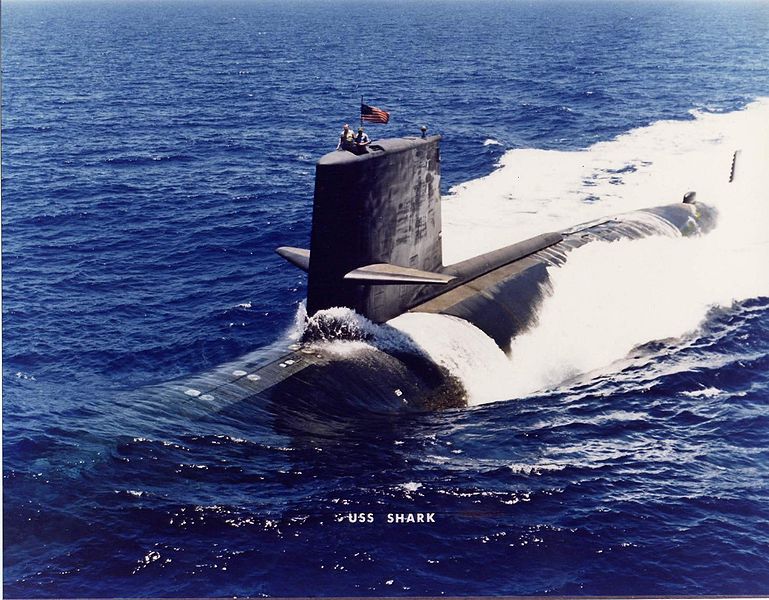
Historically, the Skipjacks are the first class of modern SSNs of the US Navy. Their predecessors of the Skate class (1957) relied on the Seawolf and Nautilus design, with a classic hull whose hydrodynamics and acoustic signature were passable, especially in regard to experiments realized with the Soviet “November” class.
USS Albacore (1953), although conceived with conventional propulsion, pushed hydrodynamics into its abutments, making experimental base of teardrop shape upon which the Skipjack relied five years later. USS Skipjack was launched in 1958 and the fifth and last of the class in 1960, with USS Scamp, Scorpion, Sculpin, Shark and Snook.
Thanks to their new S5W reactors and excellent profiling, they sleft the Skate class behind, with 10 more knots. They thus supported the comparison with the Soviet “November”, whereas the latter were especially noisy and especially much less reliable (the “widowmaker class”).
The progress brought by this class granted them a service until 86-90, but also inspired widely the design of the USS Georges Washington class SSBN as well as all subsequent SSNs. They remained the fastest attack submarines in the USN before the arrival of the Los Angeles in 1974. USS Scorpion however sank in the Azores in 1968.

Skipjack class Profile
Characteristics:
Displacement: 3070t standard, 3500t FL
Dimensions: 76.8 x 9.7 x 7.7 m
Propulsion: 1 shafts geared steam turbine, S5W reactor, 15,000 hp. 30 knots
Crew: 85
Sensors: Sonar BQS-4
Weaponry: 6TLT 533 mm, 24 torpedoes
 Tresher/Permit (1960) class SSN
Tresher/Permit (1960) class SSN

USS Tresher
This class of SNA contrasted with 1958 Skipjack: The latter, although very fast, remained cramped and their autonomy limited. To meet these limitations and improvements in electronics and armament, diving capabilities, was developed the Tresher class, which was to be a model of large series (53 units counting the improved class) Sturgeon, from 1960 to 1975, unequaled record). The USS Tresher (launched in 1960) was equipped with a new BQQ-2 active sonar capable of guiding long-range torpedoes, then SUBROC missiles, and the hull was reinforced to allow a 397-meter dive.
The increase in tonnage, based on the same Skipjack S5W reactor, resulted in a loss of speed (27 knots), partially offset by a minimalist kiosk. The USS Tresher was conducting his tests in April 1963 when he sank body and soul. The Tresher renamed Permit class (second unit) initially counted 5 units, and 5 others were extended to 90.5 meters to accommodate the new BQQ-5 sonar installed on all later buildings. The USS Jack (SSN-605, 1963, first of the elongated series) served to remain a contra-rotative propeller, remained without continuation. All these units were removed from service between 1988 and 1992.

USS tresher profile
Characteristics
Displacement: 84.9 x 9.7 x 7.7 m
Dimensions: Standard 3705t Surface, 4311t Dive
Propulsion: 1 shaft GS turbine, S5W reactor, 15,000 hp. and 27 knots
Crew: 94
Sensors: Sonar BQQ-2 or BQQ-5
Armament: 4 TLT 533 mm lateral, 20 torpedoes, 4 missiles SUBROC Harpoon, then Tomahawk
 Sturgeon class SSNs (1963)
Sturgeon class SSNs (1963)
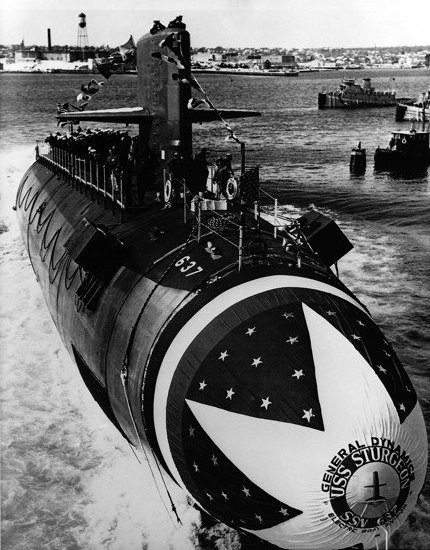
This new generation of SSNs, contemporary to the Lafayette/Franklin classes, was largely an improvement of the Tresher/Permit of the 1960s. They were larger, first class SSNs, enjoying many improvements. Their hull was identical in shape but wider and longer, reaching 89 meters () or even 92 meters () from the sub-class Archerfish (1971). The last in service was USS Richard B. Russel (1975). They formed, with 42 units, the largest class of SSNs ever deployed by any country. Accomodations were much roomier than the previous generations thanks to a well improved inner management of the cylindrical hull, which used a stronger alloy to enable deeper dives, as well more stealthy features, with a new S5W thruster for slower acoustic signature to the sacrifice of top speed (26-27 knots). Their fin was also increased in size.
As with previous SSNs, torpedo tubes were relocated to the flanks, the additional space left enabling a wider range of weapons. They carried conventional, medium, and long-range torpedoes, the nuclear Mk45, the very long-range SUBROC, later converted into Harpoon and Tomahawk. In order to simplify supply, the Mk 45, medium and long range models were removed in favor of the single Mk 48.
An attempt was also made to improve speed with a counter-rotating propeller tested on the USS Jack (Tresher type, abandoned due to excessive cavitation), while USS Narwhal (SSN-671, 1966) tried a natural circulation S5G reactor, and was stretched to 97 meters (). Eeventually USS Glenard P. Liscomb was stretched to 111 meters () to receive an extra turbo-electric thruster. The latter reached 6,480 tons underwater, against 4,777 tons for standard boats. Before the arrival of the Los Angeles class, their withdrawal started only by 1990, and went on until 1999. Only 7 were reconverted for special operations (including SEALS) in the 80s-90s, remaining in service until the 2000s.

Sturgeon class SSNs
Characteristics
Displacement: 84.9 x 9.7 x 7.7 m
Dimensions: Standard 3705t Surface, 4311t Dive
Propulsion: 1 shaft GS turbine coupled to a S5W reactor, 15,000 shp, 27 knots
Crew: 94
Sensors: Sonar BQQ-2 or BQQ-5
Armament: 4x 21-in TTs, 20 torpedoes, 4 SUBROC Harpoon, Tomahawk
 Los Angeles class SSNs (1974)
Los Angeles class SSNs (1974)
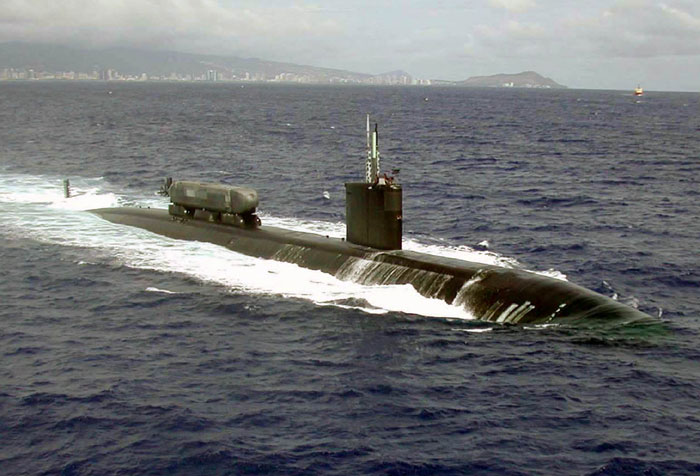
This last great SNA class of the Cold War was developed after the Sturgeon and brought the genre to a point never before reached. Because of their size, their electronics, their stealth, their range of action, they are still the best performing ANS in the world. They were defined in order to regain the speed of the Skipjack of 1958 (and to align with the Soviet SNA, always very fast), while keeping the progress made with the Tresher, then the Sturgeon, until the beginning of the years 70. In fact, the USS Los Angeles was started in January 1972, just three months after the last Sturgeon, USS Richard B Russel, at Newport News. The hull elongation and its greater diameter was due to the adaptation of a new S6G reactor developing double the power. On the other hand, the speed obtained (31 knots), was at the expense of the solidity of the double hull, at the price of a very significant decrease in the diving operational depth.
A new, stronger steel hull was also designated for them, but it was not approved in the credits, and likewise the new computerized fire control system was not ready for the first units, keeping the old system of fire. Shooting Mk.112: The new Mk.117 did not arrive with the USS Dallas (1979). It was anticipated in the first studies in 1968 to equip them with 20 vertical tubes for anti-ship missiles in the Soviet fashion, but the complexity of the system and the cost per unit (which would have jumped to 13,700 tons) made this plan rejected by Admiral Zumwalt. We returned to a more standard SNA, equipped with SUBROC / Harpoon, with a further study of hydroacoustic stealth. In total, the width of the torpedo room carried its capacity to 26 vectors.
In 1981, the USS La Jolla was the first to launch Tomahawk missiles encapsulated by its torpedo tubes, but this system only became operational with the USS Atlanta in 1983. From the USS Providence in 1985, 12 silos equipped with Tomahawk had been installed at the front of the kiosk. From the USS San Juan (1986) the Los Angeles were equipped with the new integrated BSY-1 combat system and retractable bow fins. Finally, from the USS Hartford (SSN-768, 1993), their rear drift was modified on the model of the new generation Seawolf. A total of 42 units went into service until 1990, and another 19 thereafter, constituting the world’s largest series of ANS in twenty years. Symbols of the Cold War, the former are currently placed in reserve. They look like pachyderms in comparison to the new, very stealthy SNAs developed as a result of the Seawolf.
Specifications:
Displacement: 6000t standard, 6900t FL
Dimensions: 109.8 x 10.1 x 9.8 m
Propulsion: 1 propeller, 1 turbine coupled to a S6G reactor, 30,000 cv. and 31 knots.
Crew: 127
Sensors: Sonar BQQ-5
Armament: 4 TLT 533 mm lateral, 26 torpedoes, including 12 SUBROC Harpoon, 8-20 Tomahawk missiles.
 Seawolf class SSNs (1995)
Seawolf class SSNs (1995)
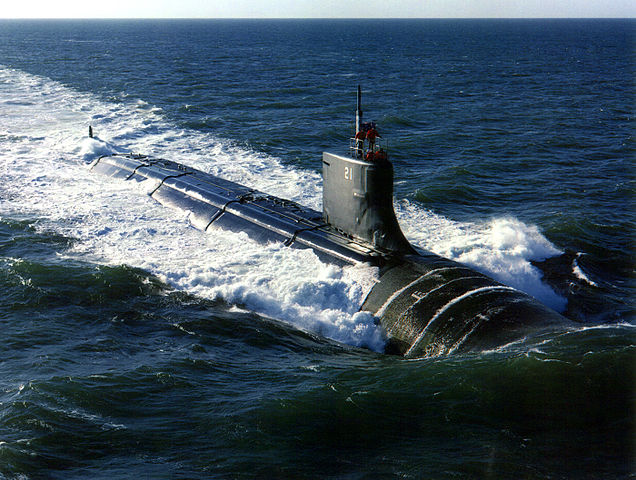
The Seawolf class was the last cold war fast attack submarines (SSN) design for the United States Navy, intended successor to the Los Angeles class. Design work began indeed began in 1983 and initially 29 were planned to be built over ten years. This was right at the start of the “Reagan Era”. With the rising costs this was reduced to 12 and after the end of the Cold War, further budget constraints led to a full cancellation in 1995 resulting in just three Seawolf built.
The spiralling costs of the ambitious Seawolf led to design the current, smaller and cheaper Virginia class. At $3 billion per unit these are the most expensive USN fast attack submarine ever but not the world’s costiest, after the more recent French Triomphant-class SSBNs (€3.1 billion per unit). As a meaningful comparison, the French Barracuda SSN was rated to €1.73 billion per unit in 2014, the Virginia class at $2.8 billion per unit in 2019.
The class was also the subject of many changes, generating two sub-groups, USS Seawolf and Connecticut (only state in the class by the way) and USS Jimmy Carter (sole SSN with the name of a president), which was considerably “jumboised” (see below). All three were reconverted as “special purpose” units, not just SSNs.
USS Seawolf (SSN-21) was built at General Dynamics Electric Boat, Groton, started 25 October 1989, launched 24 June 1995, comp. 19 July 1997.
USS Connecticut (SSN-22) was started at the sae on 14 September 1992, launched 1 September 1997, comp. 11 December 1998.
Jimmy Carter (SSN-23) also, started 5 December 1998, launched 13 May 2004 and completed in 19 February 2005. See the details below.

Specifications (*Carter):
Displacement (surface/underwater): 8,600/ 9,138 tons (12,139 tons*)
Dimensions:353 x 40 ft (108 x12 m) (452.8 ft* – 138m)
Propulsion: 1 shaft S6W PWR 220 MW (300,000 hp), APU, 2 GST 57,000 shp (43 MW)
Speed: 20 knots (23 mph; 37 km/h) silent, 35 knots max
Test depth: 1,600 ft (490 m)
Crew: 140
Sensors: BSY-2, WAA, TB-16D, 29.
Armament: 8x 21/26.5-in, 50+ torpedoes Mk48/Tomahawk/Harpoon
 Virginia class SSNs (2000)
Virginia class SSNs (2000)
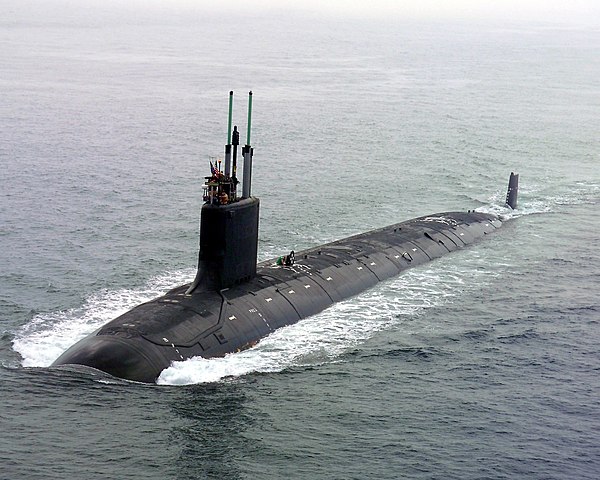
A bit off-topic, the Virginia is essentially a reaction against the very costly Seawolf class, and post-cold war, budget-constraints type to replace the Los Angeles class. They still incorporates the latest stealth, intel gathering, weapons systems and sensors tech pioneered by the Seawold, minus the R&D costs already engaged. They are designed to perform many open-ocean and littoral missions with an acquisition plan running from September 1999 (when USS Virginia was laid down) until 2043, with the last expected to be retired circa 2070s.
So far, the class comprised the following (launching date in brackets): Virginia (2003), Texas (2005), Hawaii (2006), North Carolina (2007), New Hampshire (2008), New Mexico (2009), Missouri (2009), California (2010), Mississippi (2011), Minnesota (2012), North Dakota (2012), John Warner (2014), Illinois (2015), Washington (2016), Colorado (2016), Indiana (2017), South Dakota (2017), Delaware (2018), Vermont (2019), Oregon (2020), Montana (2021), Hyman G. Rickover (2021), New Jersey (2022), and Iowa, Massachusetts, Idaho, Arkansas, Utah, Oklahoma, Arizona, Barb, Tang, Wahoo plus three more yet unnamed already booked for a 2024-2043 completion.
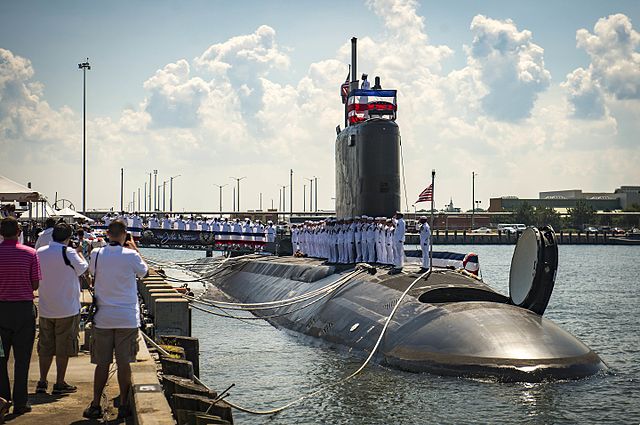
USS Jonn Warner during her commission ceremony
Note the mix of names, between states, USN personalities (Rickover was an evidence, but John Warner is a Republican from Virginia, retired after serving 30 years as a United States senator). The last recuperates old classic submarine names. There are four Block I, sic Block II, and eight Block III, ten Block V and the remainder being Block V until SSN-811. Probably a Block VI-VII or VIII will follow afterwards until the end of the class, supposed to run up to SSN-840 with the 66 planned if maintained at a rate of two per FY.
Specifications (Up to Block IV):
Displacement (surface/underwater): Block I–IV: 7,900 t (8,700 short tons)
Dimensions: 377 x 34 ft (115 x 10 m)
Propulsion: 1 shaft S9G PWR 210 MW (280,000 hp), APU, 2 GST 40,000 shp (30 MW)
Speed: 25 knots (23 mph; 37 km/h) silent
Test depth: 800 ft+ (240 m)
Crew: 135
Sensors: Classified
Armament: 12 VLS Tomahawk, 4x 21-in TTs, 25+ torpedoes Mk48/Tomahawk/Harpoon
The Block V are planned to be displacing 10,200 t (11,200 short tons) for 460 ft (140 m) long, and carry a VPM module with 28 Tomahawk BGM-109 in 12 VLS tubes, 4×21 in TTs for 65 Mk-48/UGM-84 Harpoon. There is little difference now between a SSBN with its ballistic silos and this new generation SSNs with their vertical VLS but proportions and role. These should be classified as SSGNs but are hybrids keeping the SSN denomination based on their main role.
For the moment, the SSN-X, FY 2031 is all but at a very early stage of prospective design as for 2023. The first is planned to be started in 2031, entering service at the end of the planned Virginia order so in 2043. It is supposed to be reactivated fusion between the Seawolf and Virginia, probably heavier and more advanced than the two. The program was discussed already in 2014, so ongoing since ten years now. 2024 would mark the start of the effective early design phase, with specifications probably published in the following years, after setting the definitive capabilities and requirements. The Navy’s FY2023 budget already stockpiled $237.0 million ($143.9 million for class development, $93.1 million for the improved nuclear propulsion), confirmed by President Biden in December 2022. With the upcoming context between the US and Russia-China, it’s unlikely to be curtailed. There will be a overleap between the Virginia and SSN-X for ten years in 2031-2043 though, but the last is cleary marked as a successor.
Nuclear Strategic Ballistic Missile Submarines
The development of ballistic submarines by the United States Navy (USN) began in the late 1950s as part of the Cold War arms race with the Soviet Union. Ballistic submarines are designed to carry intercontinental ballistic missiles (ICBMs), which can be launched from underwater, making them a crucial element of the U.S. nuclear deterrent strategy.
The first U.S. ballistic submarine was the USS George Washington (SSBN-598), which was commissioned in 1960. The George Washington-class submarines were the first generation of ballistic missile submarines, and they were followed by the Ethan Allen, Lafayette, James Madison, and Benjamin Franklin classes, which were all built in the 1960s and early 1970s.
The next generation of ballistic submarines, the Ohio class, began to be built in the late 1970s and entered service in the early 1980s. The Ohio-class submarines are larger and more technologically advanced than their predecessors, and they are equipped with Trident II D5 missiles, which have a range of over 7,500 miles.
The Ohio class has been upgraded over the years, with the most recent upgrade program, the Ohio Replacement Program (ORP), set to replace the oldest Ohio-class submarines with a new class of ballistic missile submarines, the Columbia class. The first Columbia-class submarine is scheduled to be delivered to the Navy in 2028.
The development of ballistic submarines has been a critical part of the U.S. nuclear deterrent strategy, as it allows the country to maintain a second-strike capability in the event of a nuclear attack. The USN’s ballistic submarines are designed to operate undetected for long periods of time, making them an essential element of the U.S. national security strategy.
-This had been written using ChatGPt on query “development of ballistic submarines USN” 22/02/2023
It must be added that this development stood on less impressive prototypes. In reality launching V2s from diesel submarines were already going in 1946. These early experiments, added with the help of German scientist and plans obtained of the V1 and V2 led to a Navy rocket program. The Navy has continued to develop and deploy rockets for a variety of purposes, including:
-For Missile Defense: The “three T” in the 1950s, the SM-1 standard and the Aegis Ballistic Missile Defense system plus SM-2 and SM-3 missiles or ASROC.
-Anti-Ship Missiles with the Harpoon and Tomahawk usable on any ships from canisters or submarines-tubes launched with long distance range.
-Ballistic missiles, with the Polaris and Trident designed to be launched from submarines. The Navy hence created a facility and conducted a variety of research programs related to rocket propulsion, materials science, and other areas of rocket technology to achieve these goals.
 “Fkeet Snorkel” SSGs
“Fkeet Snorkel” SSGs
The Loon program: USS Cusk, Carbonero
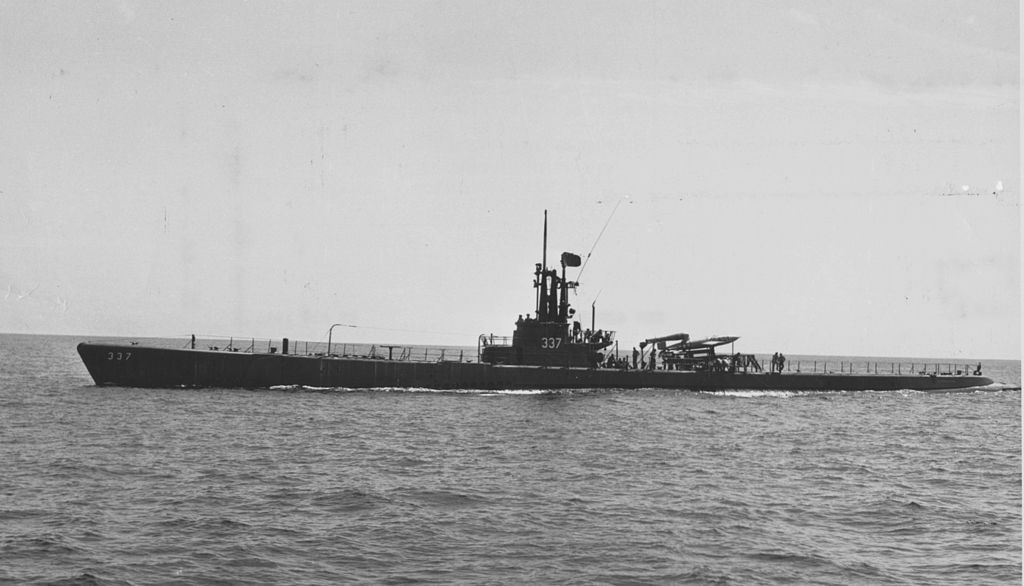
All along, protypes were provided: Early on, USS Cusk and Carbonero (Gato class “fleet snorkels”) were requisitioned for conversion. As pat of the Loon program to test a copied V1, they were fitted with launching ramps aft. The V1 was housed while underwater in a specially built cylindrical container on deck, immediately in front of the ramp. The Loon was launched aft. Many tests were performed, each time requiring very calm seas. Radar tech however progressed to such a point, the launcher submarine could enter its range, despite the long range of the V1 (Loon). It was estimated the latter could be equipped with a nuclear tip, and that the sudden surfacing and launch operation could be done before any counter-strike (likely a patrol plane) arrived on site.
USS Cusk returned to GUPPY standard service, while USS Carbonero tested Regulus missiles.
The Regulus program: USS Barbero, Tunny
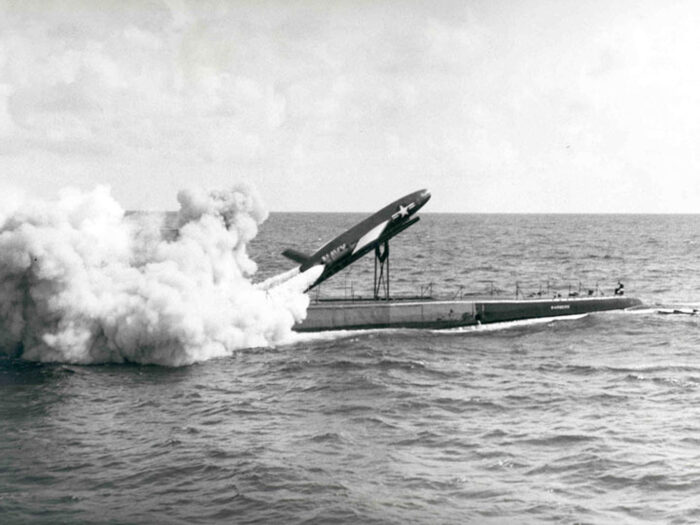
Regulus launch from USS Barbero
Two more submarines were converted, this time with streamlined fins and other GUPPY conversion additions, to test the new Regulus, long-derived from the V1 and much improved. This time a more vertical launch was the goal. USS Barbero was a bit different as she had been converted previously as a transport submarine and retained her original fin for a time. She was considered an interim before the arrival of the USS Grayback. The Regulus I program ended in 1961, and both submarines were reverted to their previous role, while USS Barbero was discarded in 1965 and Tunny converted back as a transport submarine, joining USS Perch and Sealion in 1966 wich role as transport subs was to carry a LVT, jeep and up to 50 troops, active in Korea and Vietnam for “spec ops”. A tailored “sub-oiler”, USS Guavina, was also converted. She had a new fin, only three TTs, and could carry 160k us. gal, to resupply forward-deployed SSK or early SSBNs on long patrols. Classified as SSO, the program was revised for a time with the P6M atomic seaplane program.
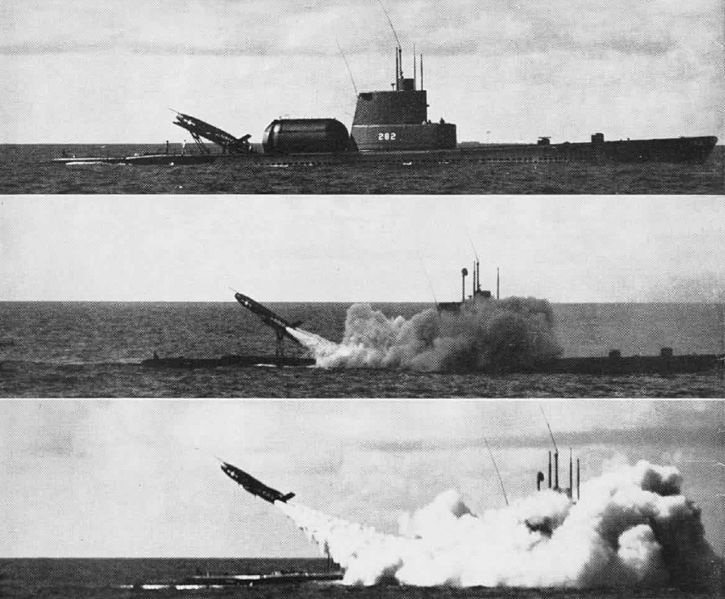
USS Tunny (SSF-282) Regulus I Launching sequence 1956
 USS Grayback (Experimental)
USS Grayback (Experimental)
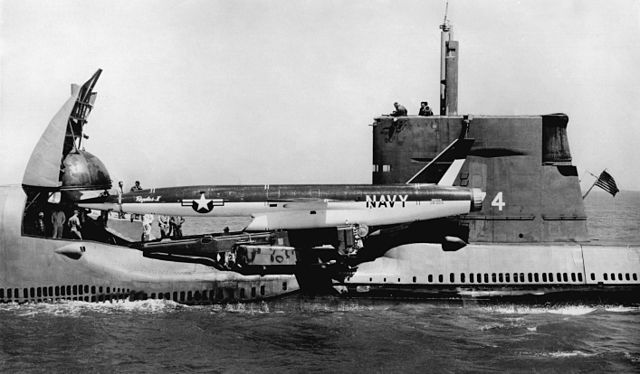
USS Grayback was laid down on 1 July 1954 at Mare Island Naval Shipyard in California, launched on 2 July 1957, commissioned 7 March 1958, and initially planned as an attack submarine but reconverted after construction in 1958 to carry and launch the Regulus nuclear cruise missile. So not a traditional SSBN (ballistic) but rather SSGN (guided-missile submarine), hence her new denomination of SSG-574. The Regulus II was an advanced nuclear cruise missile. She can carry two in her modified prow, with an extensed ramp. She served her tests purposes, and later recommissioned on 9 May 1969, as LPSS-574 (Amphibious transport submarine) where her two canisters comes in handy for spec-ops mini-subs. She was decommissioned on 15 January 1984 and stricken.
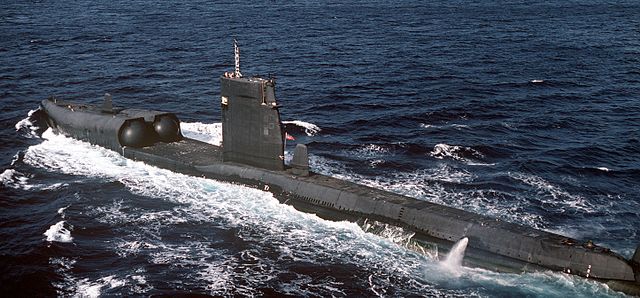
USS Grayback as LPSS-574 in 1982.
Characteristics (as built):
Displacement: 1,740 long tons (1,768 t)/2,768 long tons (2,812 t) submerged
Dimensions: 273 ft x 27 ft 2 in x 19 ft (83 x 8.28 x 5.8 m)
Later extended to: 317 ft 7 in (96.80 m)
Propulsion: 3 Fairbanks-Morse Diesel engines, 2 Elliott electric motors
Speed: 15 knots (28 km/h; 17 mph) surfaced, 12 knots (22 km/h; 14 mph) submerged
Crew: 84 officers and men
Armament: 2 missile hangars (4 Regulus I or 2 Regulus II), 8× 21 inch (533 mm) TTs
 USS Growler (Experimental)
USS Growler (Experimental)
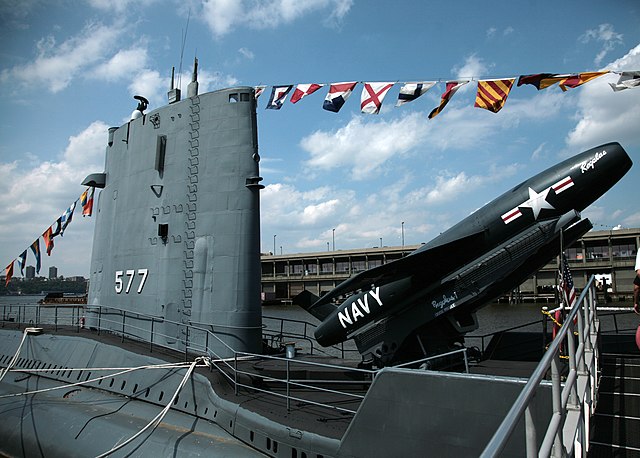
USS Growler as preserved today with a Regulus I on display (she carried four), all nuclear-tipped with upt to 120 kt Mk.5 warhead or later W27 thermonuclear one ().
USS Growler (SSG-577) another attempt to field a (nuclear) cruise missile submarine providing some deterrence, using the improved Regulus II, although originally an improvement over the Grayback, carrying the Regulus I and second of the Grayback class. Regulus II programs however shows the limitation of the SSG concept, and soon the USN turned its attention on the submarine launched ballistic missiles (SLBMs) and Polaris missile program.
USS Growler, like the Soviet Juliet class, were the only diesel-electric types carrying nuclear missiles. Provding deterrence on the Pacific coast from 1958 to 1964 was her main mission. Later, she to be was reconverted as Grayback to operate special forces missions, but instead was placed in reserve. USS Growler was ordered on 31 July 1954 to Portsmouth Naval Shipyard, laid down on 15 February 1955, Launched 15 April 1958, commissioned 30 August 1958 and active as SSG until 25 May 1964, then in reserve and stricken on 1 August 1980. She was preserved at the Intrepid Sea, Air & Space Museum complex.

Characteristics:
Displacement: 2,110 tons light, 3,550 tons full, 1,440 tons dead
Dimensions: 317′ 3″ ft x 27 ft x 19 ft (96.69 x 8.2 x 5.7 m)
Propulsion: As Grayback but better streamlining
Speed: 17 kn (20 mph; 31 km/h) surfaced, 12 kn (14 mph; 22 km/h) submerged
Test depth: 712 m (2300 ft)
Complement: 9 officers, 11 chief petty officers, 68 enlisted men
Armament: Same as Grayback. She carried 16 torpedoes (12 bow, 4 stern)
 USS Halibut (Experimental)
USS Halibut (Experimental)
USS Halibut was the third SSG of the US Navy, first and last with nuclear power (SSGN). Her keel was laid down at Mare Island Naval Shipyard on 11 April 1957, launched on 9 January 1959, commissioned on 4 January 1960, designed under project SCB 137 same as the Grayback “class” but completed with nuclear power under SCB 137A, and first submarine initially designed to launch guided missiles, the Regulus I and II and with a completely automated launching system with hydraulic machinery.
After achiving her long deterrence patorls, reclassified SSN-587 (keeping only her TTs) since 15 April 1965, she was decommissioned on 30 June 1976, tuned “special operations platform” and eventually stricken on 30 April 1986, following by a long recycling process.

Characteristics:
Displacement: 3655 tons surfaced, 5000 tons submerged
Dimensions: 350 x 29 x 28 ft (110 x 8.8 m x 8.5 m)
Propulsion: 2 shafts geared steam turbines, one S3W reactor, 7,300 shp
Speed: 15/20+kt (28/37 km/h) surfaced/submerged
Complement: 9 officers and 88 men
Armament: One Regulus missile launcher (5x Regulus I/2 x Regulus II), 6× 21 in TTs
 Georges Washington class SSBNs (1958)
Georges Washington class SSBNs (1958)
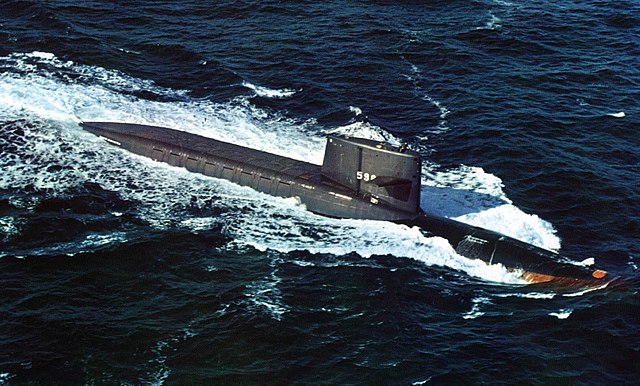
The George Washington were the first serial nuclear-powered ballistic missile submarines of the USN, and with the later Ethan Allen, Lafayette (and Madison/Franklin sub-classes) formed the “41 for Freedom” group, main US nuclear deterrent force for almost four decades, until the late 1980s.

Characteristics:
Displacement: 5,959 long tons Surfaced, 6,709 long tons Submerged
Dimensions: 381.6 x 33 x 29 ft (116.3 x 10 x 8.8 m)
Propulsion: 1x S5W PWR, 2 geared steam turbines 15,000 shp (11,000 kW) 16/22 kts
Crew: 112
Test depht: 700 ft (210 m)
Embedded Electronics: Sonar BQS-4
Armament: 6x 21-in TTs (12), 16 Polaris SLBM
 Ethan Allen class SSBNs (1960)
Ethan Allen class SSBNs (1960)
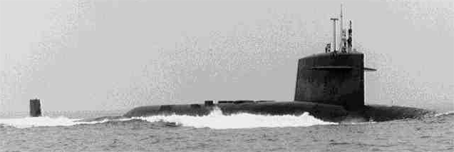
These were the first SSBN, the first ballistic-missile carrying submarines, nuclear-powered, designed as such in the USA. The previous Georges Washington were indeed derived from the SNA Skipjack class. They themselves took over many elements of the Tresher, quieter. However, they were too small to receive the new Poseidon missiles, and were effectively withdrawn from service as SNLEs. They were built at Newport News and Electric Boat between 1959 and 1963, including USS Ethan Allen, Sam Houston, Thomas Edison, John Marshall and Thomas Jefferson. In 1980-81 they lost their SNLE (“SSBN”) designation for SNA (“SSN”), with their Polaris control system removed and concrete poured into their silos. The Ethan Allen was set aside in 1983, the Jefferson in 1985, while the Houston and Marshall were equipped with bunkers to accommodate each of 67 SEAL (marine commandos) equipped in 1984. They were set aside in 1991-92′

Characteristics:
Displacement: 2144 surface 2639t dive
Dimensions: 66.8 x 8.8 x 6.3 m
Propulsion: 1 propeller, 3 diesels FM, 1 word. elect. Westinghouse, 4800/3150 cv. and 15/21 knots max. s/p.
Crew: 77
Embedded Electronics: Sonar BQS-4
Armament: 6 x 533 mm TTs (bow), 16 Polaris SLBM
 Lafayette class SSBNs (1963)
Lafayette class SSBNs (1963)
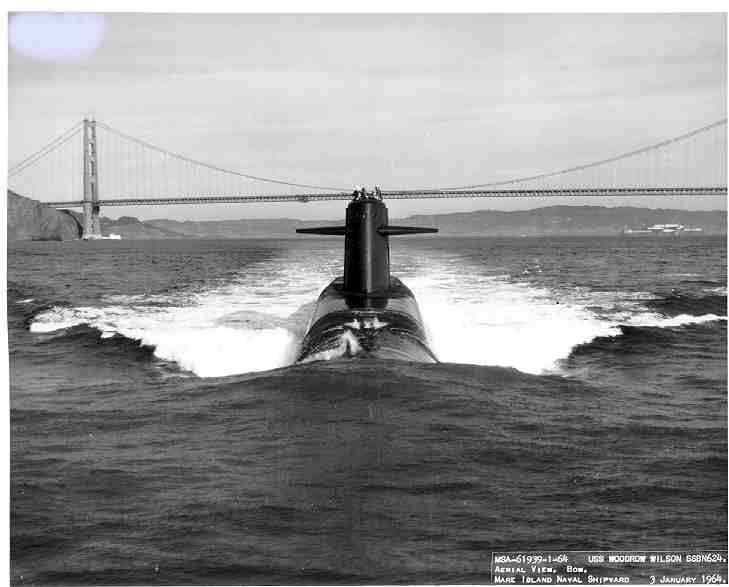
The Lafayettes were not a revolutionary design, since they completely echoed the design of the previous Ethan Allen, themselves closely derived from Washington. The main differences were dictated by the more massive silos adapted to the new Poseidon vectors, the hull being lengthened by a few meters. because of savings, the series continued until 1966 with a total of 31 units, the largest series of SNLE companies in the west. These buildings formed until the arrival of the very high-capacity Ohio, the spearhead of the naval deterrent force of the United States and even of NATO.
The improvements in the series were significant and led to two subclasses, James Madison (SSBN 627-639) and Benjamin Franklin (SSBN 640-659). The last, USS Will Rodgers, came into service in 1967. From 1979, they began to be converted to the Trident I, and all received eight tubes launch countermeasures in the 80s. From 1988, the SALT II agreements resulted in the retirement of the oldest units, and progressively, until 1995, all were decommissioned, except two, Kamehameha and James Polk, converted to SNA and carrying SEAL commandos for secret missions. The latter operated in particular in Lebanon. These two buildings are the only ones currently active.

Characteristics:
Displacement: 7325t, 8250t FL
Dimensions: 129.6 x 10.1 x 8.5 m
Propulsion: 1 propeller, 1 turbine coupled to a S5W reactor, 15,000 hp. and 20 knots.
Crew: 140
Sensors: BQS sonars 4, 7, 15 and 19.
Armament: 16 LP Poseidon missiles, 4 TLT 533 mm.
 Ohio class SSBNs (1979)
Ohio class SSBNs (1979)
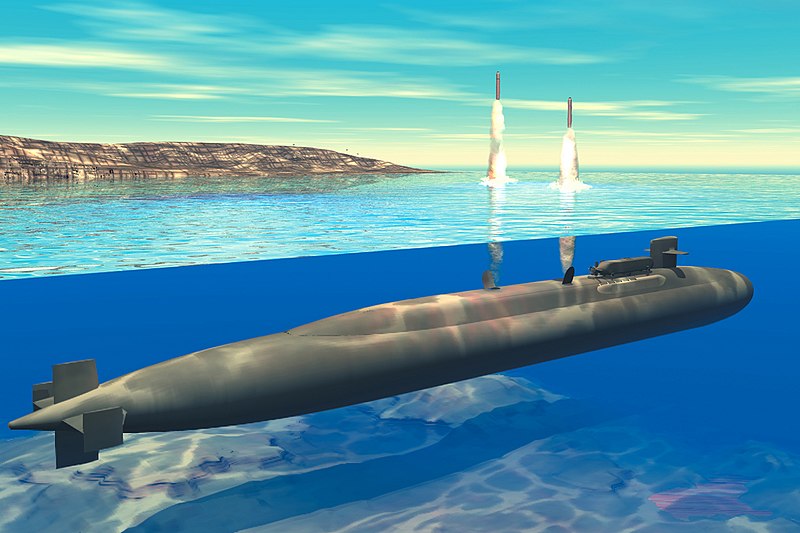
At the same time that the Lafayette were converted to trident missiles, a new type of SSBN was launched with Ohio. The long design time between that of the Lafayette (1961-64) and the Ohio (1975), allowed to define a model with greater offensive capacity, with 24 vectors instead of 16, which allowed to reduce the number of units in service, and hence their cost. They were by far the largest submarines in the west, overshadowed only by the huge contemporary Soviet Typhoons. Their turbo-electric propulsion and the almost gummed vibrations of the new S8G reactor gave them, together with the excellence of their hydroacoustic signature, a much greater stealth and speed than their predecessors, benefiting from studies conducted in concert on the Los Angeles attack. Their automation and centralization further allowed them a smaller crew, to the benefit of habitability.

Finally, their maximum cruising depth was 300 meters. The ohio are deemed to perform 70-day sea rotations, with only 25 days of docking, and a dry refit every 12 years, giving them a higher effectiveness rate than the Lafayette-type submarines. The ohio, started in 1976, suffered from development delays that delayed its testing until June 1981. Subsequently, 17 others entered into service until 1999. 10 were in service when the wall fell. They are currently the only naval nuclear deterrent force in the US.

Ohio class SSBNs
Specifications
Displacement: 16,000t standard, 18,700t FL
Dimensions: 170.7 x 12.8 x 10.8 m
Propulsion: 1 propeller, 1 turbine coupled to an S8G reactor, 35,000 hp. and 25 knots.
Crew: 133
Sensors: BQQ-6 bow sonar.
Armament: 24 Trident missiles, 4 TLT 533 mm.
 Columbia-class SSBN (2020)
Columbia-class SSBN (2020)
A bit off-topic related to the cold war, but worthy of interest, are the last generation of USN Ballistic Nuclear Submarines (SSBN).

Specifications
Displacement: 16,000t standard, 18,700t FL
Dimensions: 170.7 x 12.8 x 10.8 m
Propulsion: 1 propeller, 1 turbine coupled to an S8G reactor, 35,000 hp. and 25 knots.
Crew: 133
Sensors: BQQ-6 bow sonar.
Armament: 24 Trident missiles, 4 TLT 533 mm.
Armament and sensors of USN Submarines
Armaments
Torpedoes
Deck Guns were kept for some time in most Gato/Balao/tench boats after WW2. However they were removed at the same time the first GUPPY conversions took place. The concept was seen totally obsolete after 1946. Work and R&D focused exclusively on promising new torpedoes, which ran without trail and acoustic, in order to hit their mark 100% of the time, traded for range and speed.
21″ (53.3 cm) Mark 33
Designed in 1946 but never entered service. Passive homing, first with a cast aluminum alloy body, tests started 1943, 30 built, later features used in the Mark 35.
21″ (53.3 cm) Mark 35 (“Universal” 1946-49)
Weight 1,770 lbs. (803 kg) 13 ft 5 in (4.089 m) WH 270 lbs. (122.5 kg) HBX, 15,000 yds/27 kts. Elec, A/P acoustic
21″ (53.3 cm) Mark 37 (1956)
1,430 lbs. (649 kg) 11 ft 3 in (3.429 m) WH 330 lbs. (150 kg) HBX 10,000 yds/26 kts Prop. Elec. GdS Active/Passive acoustic/wire
21″ (53.3 cm) Mark 39 (1955)
1,275 lbs. (578 kg), 11 ft 1 in (3.378 m) WH 130 lbs. (59 kg) HBX, 13,000 yds/15.5 knots. Prop. Electric-Battery GdS Wire/passive acoustic
19″ (48.3 cm) Mark 45 (1957)
2,400 pounds (1,100 kg), 227 in (580 cm) WH W34 nuc 11 kt. Electric Prop. 40 kts 5–8 miles (8–13 km), GdS Gyroscope/wire
21″ (53.3 cm) Mark 48/ADCAP (1972-1988-2008)
3,695 lb (ADCAP) 19 ft. Range 38 km/55 kn or 50 km/40 kn. HE 647 Ib WH. prox. fz. Otto fuel II. Dpth 800 m (2,600 ft). GdS Broadband Advanced Sonar System
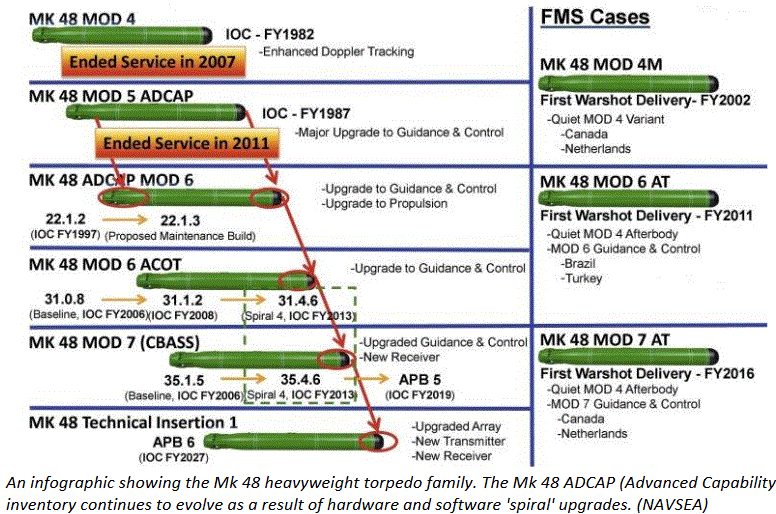
Cruise Missiles
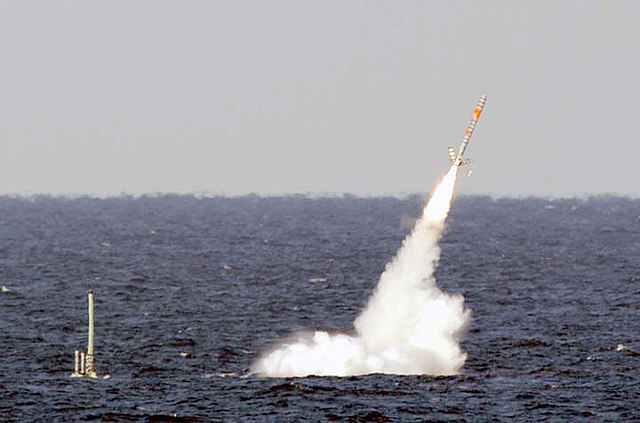
Tomahawk launched by USS Florida, Exercize “Giant Shadow”, Bahamas, 1990s
The first generation was the Regulus program, which ended in the 1960s. This first generation derived from the V1 was not very reliable, but large enough to carry a tactical nuclear warhead. Its precision was not sufficient for any ground target precision strike or sinking a ship.
The generic acronym used to describe this new capability was SUBROC. If the diameter of a missile was inferior to 21-inches (533 mm), the standard for a torpedo tube, wings folded, then it was possible to launch a torpedo containing a missile. The idea was not new, pioneered with the RUR-5 ASROC in the early 1960s. The difference was that the latter was a missile carrying a torpedo. In the case of a SUBROC, it’s the reverse: A Torpedo carrying a missile. The torpedo is a designed to rise to the surface, opens, and the missile is ignited at the surface in a very fast, high precision manner. The USN focused on two types that were compatible and became the great standard, carried by surface ships, aviation, trucks on land and submarines. The Los Angeles class was the first to introduce tube-launched missiles, Tomahawk land attack missile and Harpoon anti–ship missile.
Tomahawk
SSNs 719–750 Block II Los Angeles built 1977-1982 introduced 12 vertical launch tubes for Tomahawk cruise missiles and an upgraded reactor core. Designed by General Dynamics, the BGM-109A Tomahawk Land Attack Missile – Nuclear (TLAM-N) was the most impressive, fitted with a W80 nuclear warhead. The Block II TLAM-A was capable of 1,350 nmi (1,550 mi; 2,500 km), flying at 98–164 ft (30–50 m) Mach 0.74. or 567.7 mph (493.3 kn; 913.6 km/h), like the Harpoon. Both are closely related.
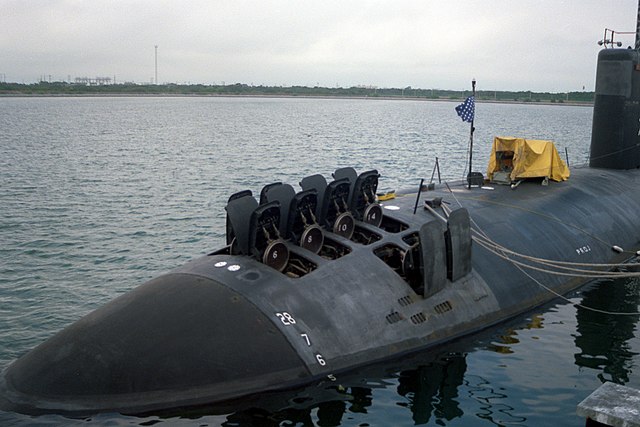
USS Santa Fe (SSN-763) VLS doors open.
Harpoon
The standard antiship missile UGM-84 is fitted with a solid-fuel rocket booster and encapsulated in a container to enable submerged launch through a torpedo tube. Designed by General Dynamics (initially) it had a Williams International F107-WR-402 turbofan using TH-dimer fuel and solid-fuel rocket booster. Subsonic it could reach for the Block III TLAM-C and Block IV TLAM-E 900 nmi (1,000 mi; 1,700 km). its main advantage is to be able to fly under radar, at 98–164 ft (30–50 m) at Mach 0.74, with a warheard which could be the Nuclear W80 warhead (5-150 kt), the standard 1,000 pounds (450 kg) HE, the submunition dispenser BLU-97/B/PBXN.
Note that both are to be studied in detail in the missile encyclopediae
Ballistic Missiles
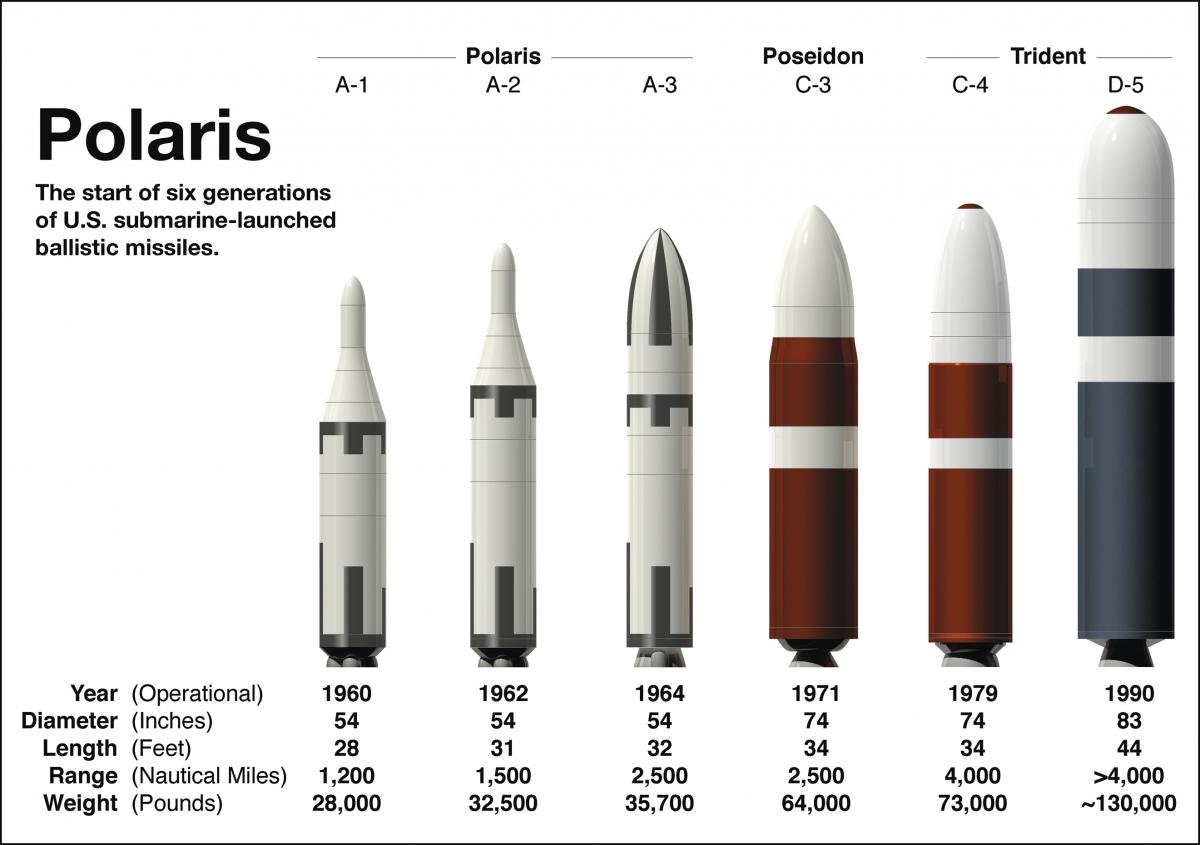
The ballistic missile family: polaris, poseidon, and trident. Src: JM Caiella for USNI.org
The experience with the Regulus I-II derived from the German V2 was considered a first generation attempt, and if carried by three ships for semi-experimental deterrence, the 1960s saw the more promising Ballistic missiles (launched vertically) derived from the German V2, far more promising. We will not dwelve in the full history here. So two main programmes cohabited for USN SSBNs, called the SLBMs:
Polaris (1961)
The UGM-27 Polaris were the first generation SLBMs in service with the USN. They had a two-stage solid-fueled body, and carried a single nuclear warhead. Active from 1961 to 1980 it saw service on the ten George Washington and Ethan Allen-class which retained their Polaris A-3 until 1980 as their silos (missile tubes) were not large enough to accommodate the new Poseidon.
Poseidon (1974)
The UGM-73 Poseidon missile was the second type of SLBM, powered by a two-stage solid-fuel rocket and replacing the Polaris. It became the staple of the superclass Lafayette, and developed furter into the Trident I (1979) and Trident II (1990) deployed on the Lafayette and Ohio class.
Trident (1980)
The Trident missile is the latest generation of SLBM, equipped with multiple independently targetable reentry vehicles or “MIRV”. Lockheed Missiles and Space Corp. was its initial designer, and it was designed to launch multiple thermonuclear warheads for the new Ohio class SSBNs. But they were also shared with the British Vanguard-class submarines and with British warheads.
Mines
The idea of laying mines using a submarine is as old as the concept of submarine itself. The first dated back from before even WW1, like the Russian Krab. However the concept seemed abandoned in the cold war, to resurface with a new generation of ordnances. Block III Los Angeles class (SSNs 751–773) built 1982-1989 of the programme “688i” (for Improved) had the ability to lay mines:
These were of the Mk 67 mobile and Mk 60 CAPTOR mines. Both were tube-launched, the first called SLMM was developed in 1982-83.
Mk67 Mobile Mine: Weight: 1,765 pounds/1658 pounds (754 kilograms), 13’4″/161 inches (409 centimeters) long for 1’9″/19 inches (48.5 centimeters) in width. Detection System: Magnetic/seismic or Magnetic/seismic/pressure target detection devices (TDDs). Depth Range 600 feet (183 meters), payload 330 pounds (150 kilograms) of high explosive.
Mk 60 CAPTOR mine: Developed from 1979 by Goodyear Aerospace, air-droppable and compatible with submarine tubes, it weighted 935 kg (2,061 lb) for 3.35 m (132 in) in lenght, 530 mm (21 in) in diameter. Effective firing range was 8,000 yards (7,300 m) with a 44 kg (97 lb) Mark 46 torpedo warhead alternative to the PBXN-103 (tactical nuclear). It used a two-speed reciprocating external combustion Otto fuel II, and could reach 1,000 feet (300 m) deep at max 28 knots (52 km/h), guided by active or passive/active acoustic homing. These “mines” are really closer to regular torpedoes.
Sensors and tech
Great leaps were made, from WW2-inherited acoustic sonars and surface radars of the Gato/Balao to the very sophisticated systems deployed on the Seawolf class, very large bow spheric sonar arrays which obliged to relegate torpedo tubes elsewhere, multi-phased, and towed sonars, as well as behind the displays, selected few, super-skilled “golden ears” assisted by computer science and databases.
GUPPY variants: BQR-2, BQS-2, SQR-3, BQG-4 PUFFS (most GUPPY III)
Barracuda class: BQR-4 Sonar
Tange class, USS Nautilus, Seawolf, Skate, Barbel, Skipjack classes: The 1st gen SSNs has a bow-mounted BSQ-4 sonar, which shared the bow space with four torpedo tubes.
USS Tullibee was the first to introduced the BQQ-2 in a bow sphere, with relocated tubes.
The Tresher marked not only the adoption of the BQQ-2 but also had the large bow-mounted sonar sphere (plus angled torpedo tubes) this placed the sonar sphere in an optimum position for long range target detection. The system was repeated on the Sturgeon class.
Sturgeon/Tresher/Permit: BQQ-2. 1980s upgrades BQQ-5 sonar with retractable towed array, Mk 117 torpedo FCS
Los Angeles – BQQ-5 suite: Active and passive systems sonar BQS-15 detecting and ranging sonar, WLR-8V(2) ESM receiver, WLR-9 acoustic receiver for detection of active search sonar and acoustic homing torpedoes, BRD-7 radio direction finder, BPS-15 radar and for EW, WLR-10 countermeasures set.
Seawolf class: ARCI, Modified AN/BSY-2 combat system and wide aperture array (WAA), new towed-array sonar.
SSBNs not being hunters, still needed to “watch” their surroundings and from USS Georges Washington to Ohio, they carried a BQS-4, BQR-15, BQR-7, BQR-19, and BQQ-6.
As for the “radar picket” subs, the Migraine carried the SS, SV, SV-1/2, SR-2, BPS-2/3/4, YE-2/3.
The Sailfish class had the BPS-2/3, and a BQG-4 sonar. USS Triton was given a BPS-2 and SPS-26 radars.
Sources
Links
http://navsource.org/archives/08/pdf/0855204a.pdf
navsource.org – USN SSK class
On hnsa.org/
eisenhowerlibrary.gov/
http://www.navy.mil/ uss nautilus
navsource.org/ development of USS Nautilus
history.navy.mil/ nautilus-ssn-571
hisutton.com SSGN-594
hisutton.com on USS-Nautilus
hisutton.com on USS Halibut
navweaps.com on us cold war torpedoes
Post-World War II Acoutic ASW Torpedo Development: A brief history of the MK-35, MK-41, MK-43 and MK-44 By James V. Shannon
hnsa.org/ official ordnance book, torpedo management 1947
hnsa.org on US Torpedo Development
WW II development of homing torpedoes 1940-1946
Post WW-II Submarine Launched/ Heavyweight Torpedoes
About the early Torpedo data Computer tested on USS Cod
Books
Friedman, Norman (1994). U.S. Submarines Since 1945: An Illustrated Design History. Annapolis USNI
Bauer, K. Jack; Roberts, Stephen S. (1991), Register of Ships of the U.S. Navy, 1775-1990: Major Combatants, Westport. Greenwood Press
Firsthand account of nuclear testing by a Bonita crew member
Gardiner, Robert and Chumbley, Stephen, Conway’s All the World’s Fighting Ships 1947–1995
Dictionary of American Naval Fighting Ships.
Naval Weapons of World War Two” by John Campbell
“US Naval Weapons” and “The Naval Institute Guide to World Naval Weapons 1991/92” and “1994 Update” all by Norman Friedman
“US Navy Torpedoes” articles by Frederick J. Milford in “Submarine Review” starting in April 1996
“From Fancy to Stingray: British Torpedoes since 1945” article by Antony Preston in “Warships Volume V”
“Ship Killers: A History of the American Torpedo” by Thomas Wildenberg and Norman Polmar
Videos
A-Sub movie archive
regulus submarines
USS Growler – USN 1950s Movie


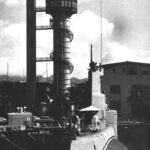
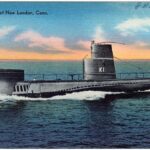
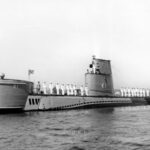
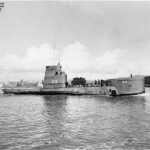
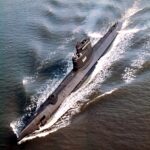
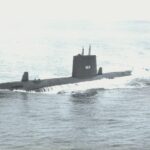
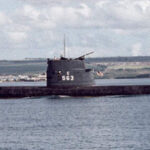
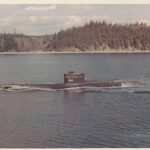
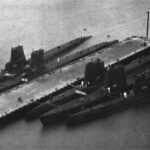
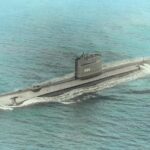
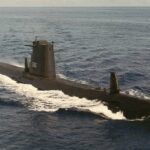
 Latest Facebook Entry -
Latest Facebook Entry -  X(Tweeter) Naval Encyclopedia's deck archive
X(Tweeter) Naval Encyclopedia's deck archive Instagram (@navalencyc)
Instagram (@navalencyc)





 French Navy
French Navy Royal Navy
Royal Navy Russian Navy
Russian Navy Armada Espanola
Armada Espanola Austrian Navy
Austrian Navy K.u.K. Kriegsmarine
K.u.K. Kriegsmarine Dansk Marine
Dansk Marine Nautiko Hellenon
Nautiko Hellenon Koninklije Marine 1870
Koninklije Marine 1870 Marinha do Brasil
Marinha do Brasil Osmanlı Donanması
Osmanlı Donanması Marina Do Peru
Marina Do Peru Marinha do Portugal
Marinha do Portugal Regia Marina 1870
Regia Marina 1870 Nihhon Kaigun 1870
Nihhon Kaigun 1870 Preußische Marine 1870
Preußische Marine 1870 Russkiy Flot 1870
Russkiy Flot 1870 Svenska marinen
Svenska marinen Søværnet
Søværnet Union Navy
Union Navy Confederate Navy
Confederate Navy Armada de Argentina
Armada de Argentina Imperial Chinese Navy
Imperial Chinese Navy Marinha do Portugal
Marinha do Portugal Mexico
Mexico Kaiserliche Marine
Kaiserliche Marine 1898 US Navy
1898 US Navy Sovietskiy Flot
Sovietskiy Flot Royal Canadian Navy
Royal Canadian Navy Royal Australian Navy
Royal Australian Navy RNZN Fleet
RNZN Fleet Chinese Navy 1937
Chinese Navy 1937 Kriegsmarine
Kriegsmarine Chilean Navy
Chilean Navy Danish Navy
Danish Navy Finnish Navy
Finnish Navy Hellenic Navy
Hellenic Navy Polish Navy
Polish Navy Romanian Navy
Romanian Navy Turkish Navy
Turkish Navy Royal Yugoslav Navy
Royal Yugoslav Navy Royal Thai Navy
Royal Thai Navy Minor Navies
Minor Navies Albania
Albania Austria
Austria Belgium
Belgium Columbia
Columbia Costa Rica
Costa Rica Cuba
Cuba Czechoslovakia
Czechoslovakia Dominican Republic
Dominican Republic Haiti
Haiti Hungary
Hungary Honduras
Honduras Estonia
Estonia Iceland
Iceland Eire
Eire Equador
Equador Iran
Iran Iraq
Iraq Latvia
Latvia Liberia
Liberia Lithuania
Lithuania Mandchukuo
Mandchukuo Morocco
Morocco Nicaragua
Nicaragua Persia
Persia San Salvador
San Salvador Sarawak
Sarawak Uruguay
Uruguay Venezuela
Venezuela Zanzibar
Zanzibar Warsaw Pact Navies
Warsaw Pact Navies Bulgaria
Bulgaria Hungary
Hungary

 Bundesmarine
Bundesmarine Dutch Navy
Dutch Navy Hellenic Navy
Hellenic Navy Marina Militare
Marina Militare Yugoslav Navy
Yugoslav Navy Chinese Navy
Chinese Navy Indian Navy
Indian Navy Indonesian Navy
Indonesian Navy JMSDF
JMSDF North Korean Navy
North Korean Navy Pakistani Navy
Pakistani Navy Philippines Navy
Philippines Navy ROKN
ROKN Rep. of Singapore Navy
Rep. of Singapore Navy Taiwanese Navy
Taiwanese Navy IDF Navy
IDF Navy Saudi Navy
Saudi Navy Royal New Zealand Navy
Royal New Zealand Navy Egyptian Navy
Egyptian Navy South African Navy
South African Navy






























 Ukrainian Navy
Ukrainian Navy dbodesign
dbodesign